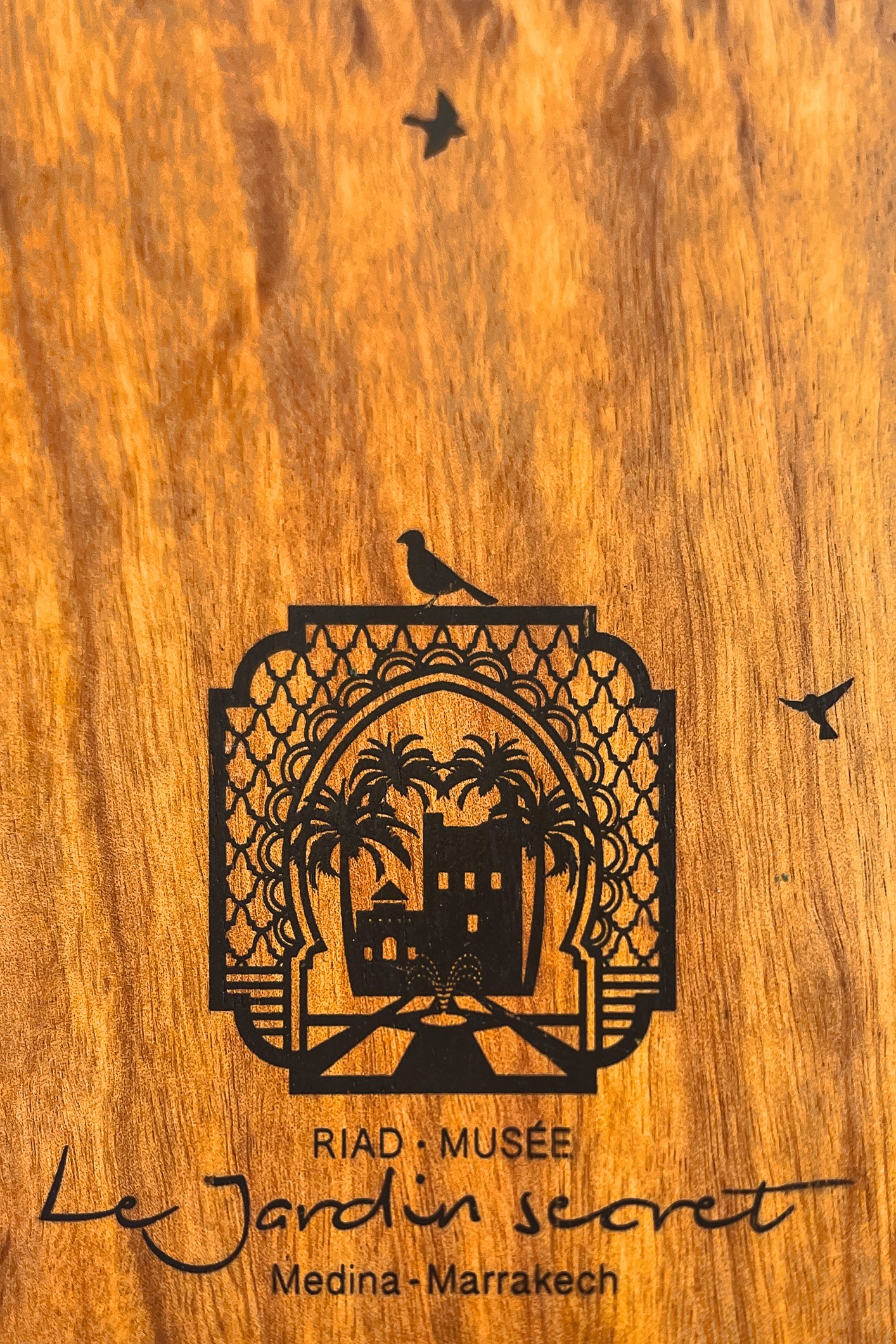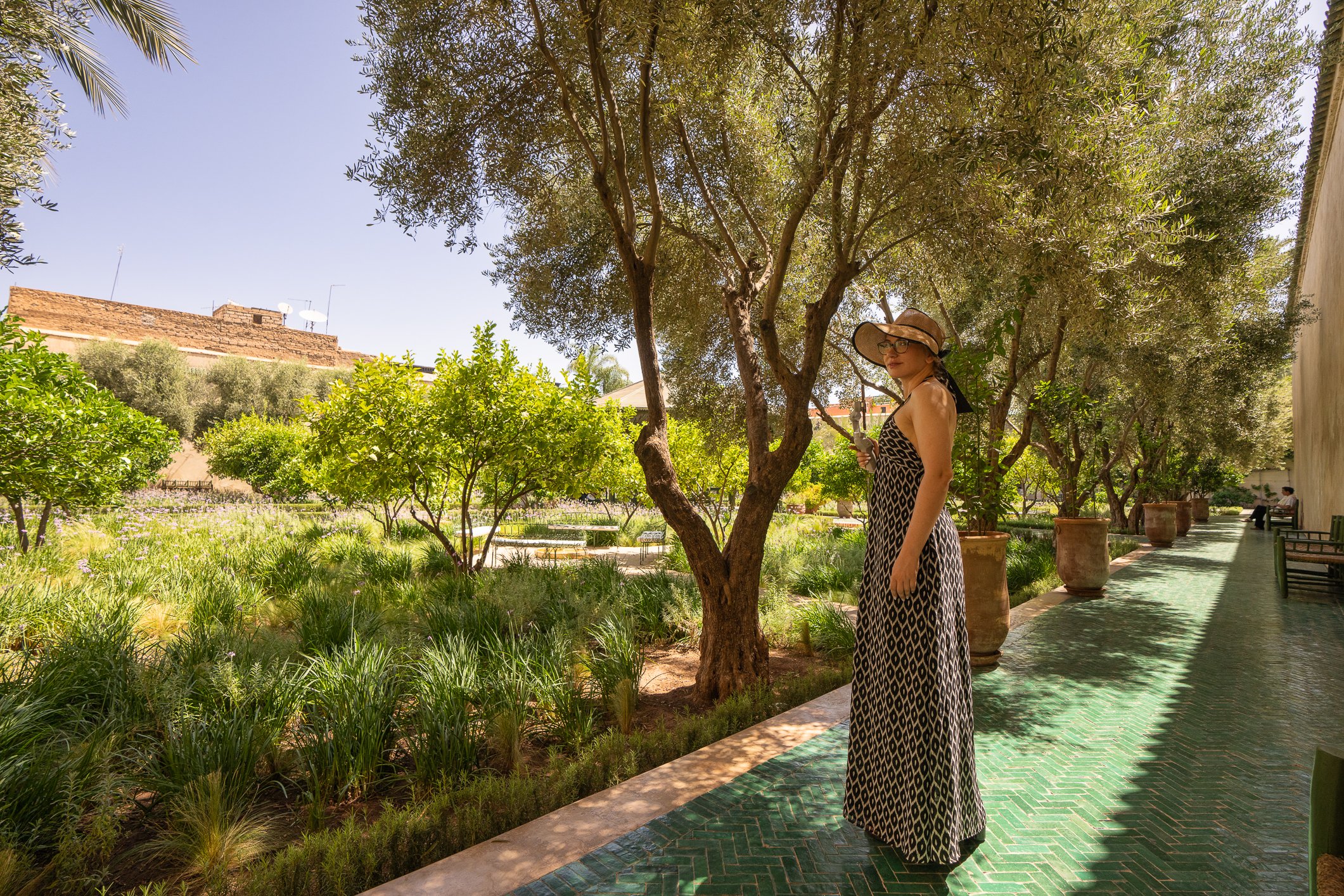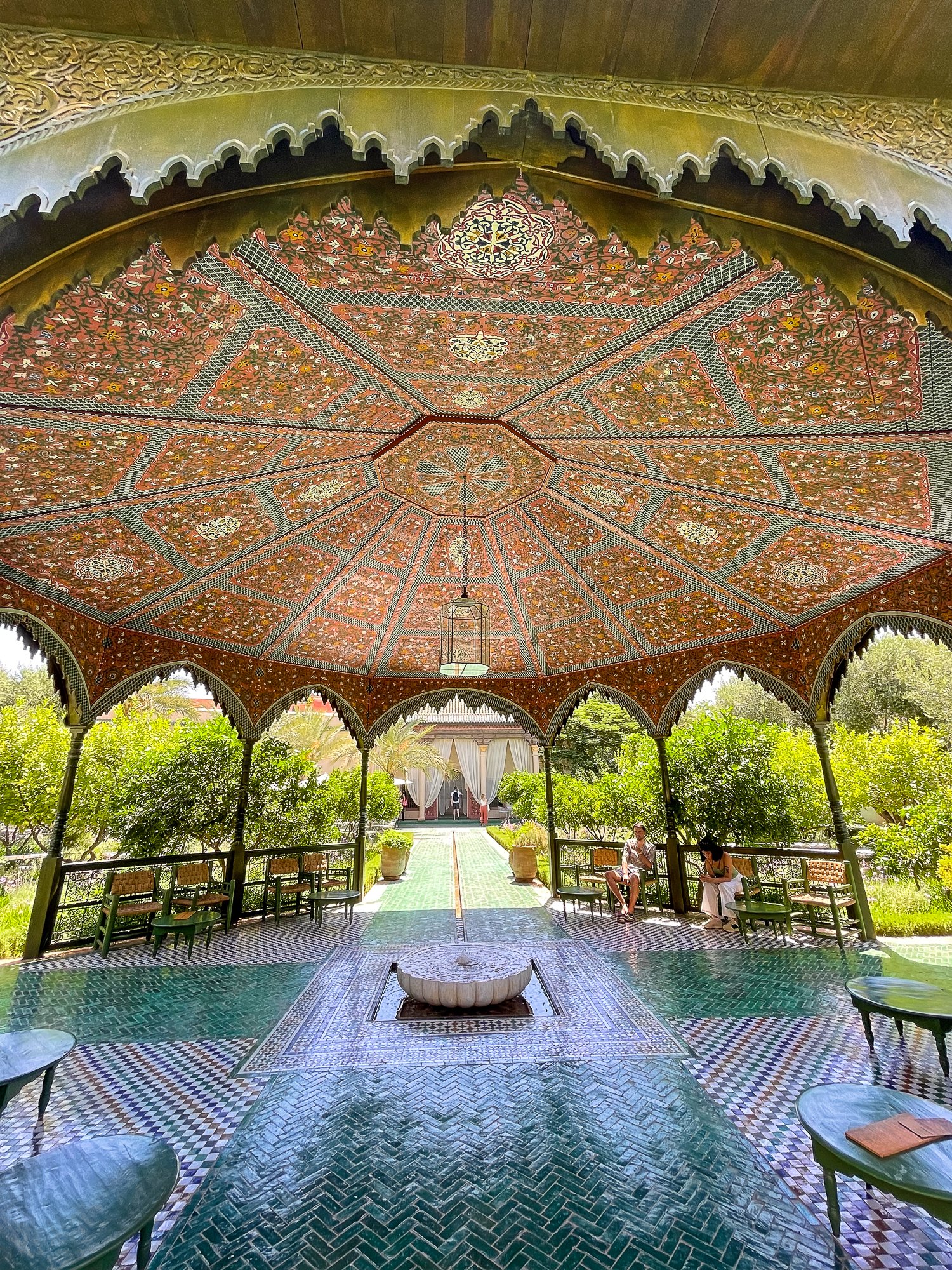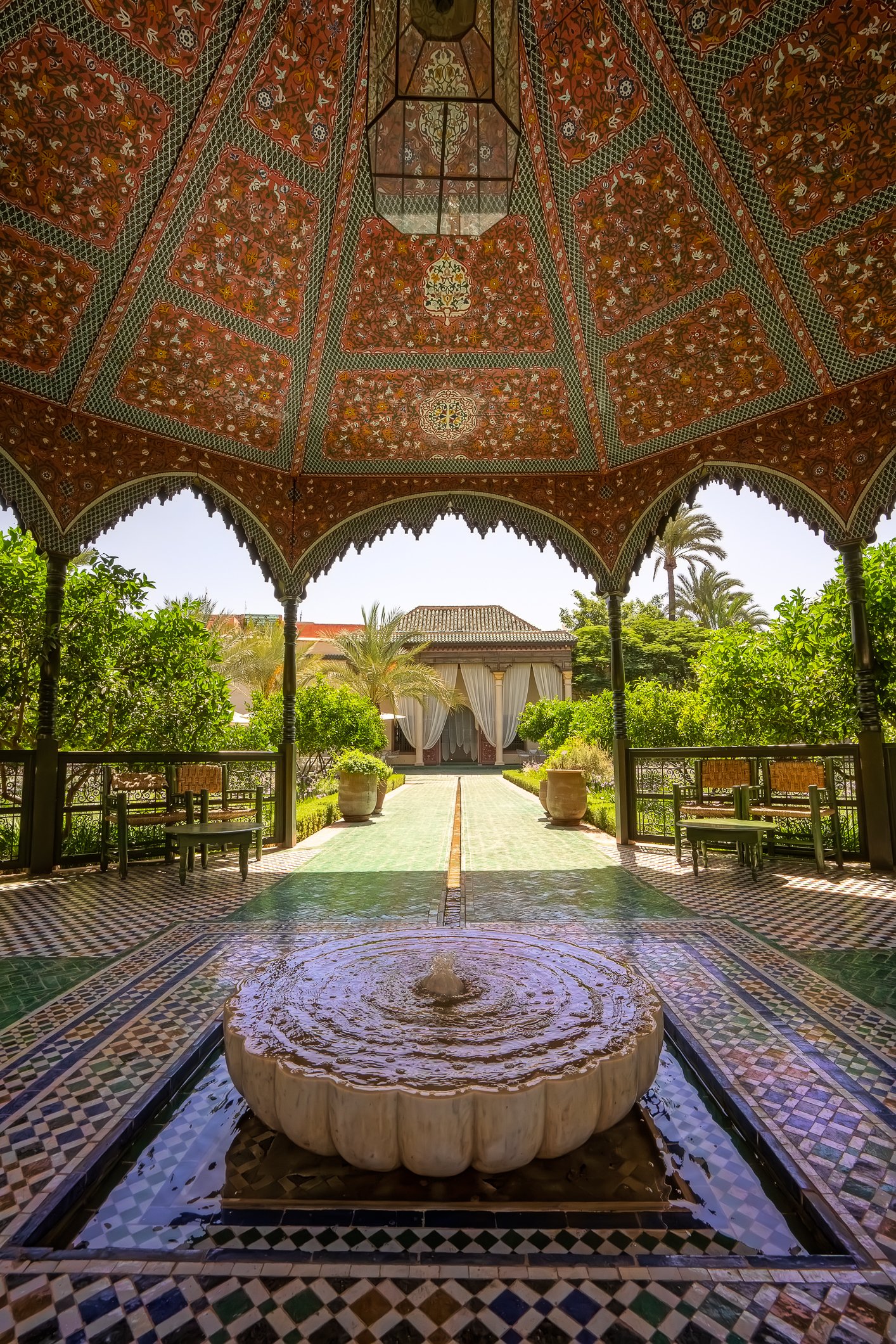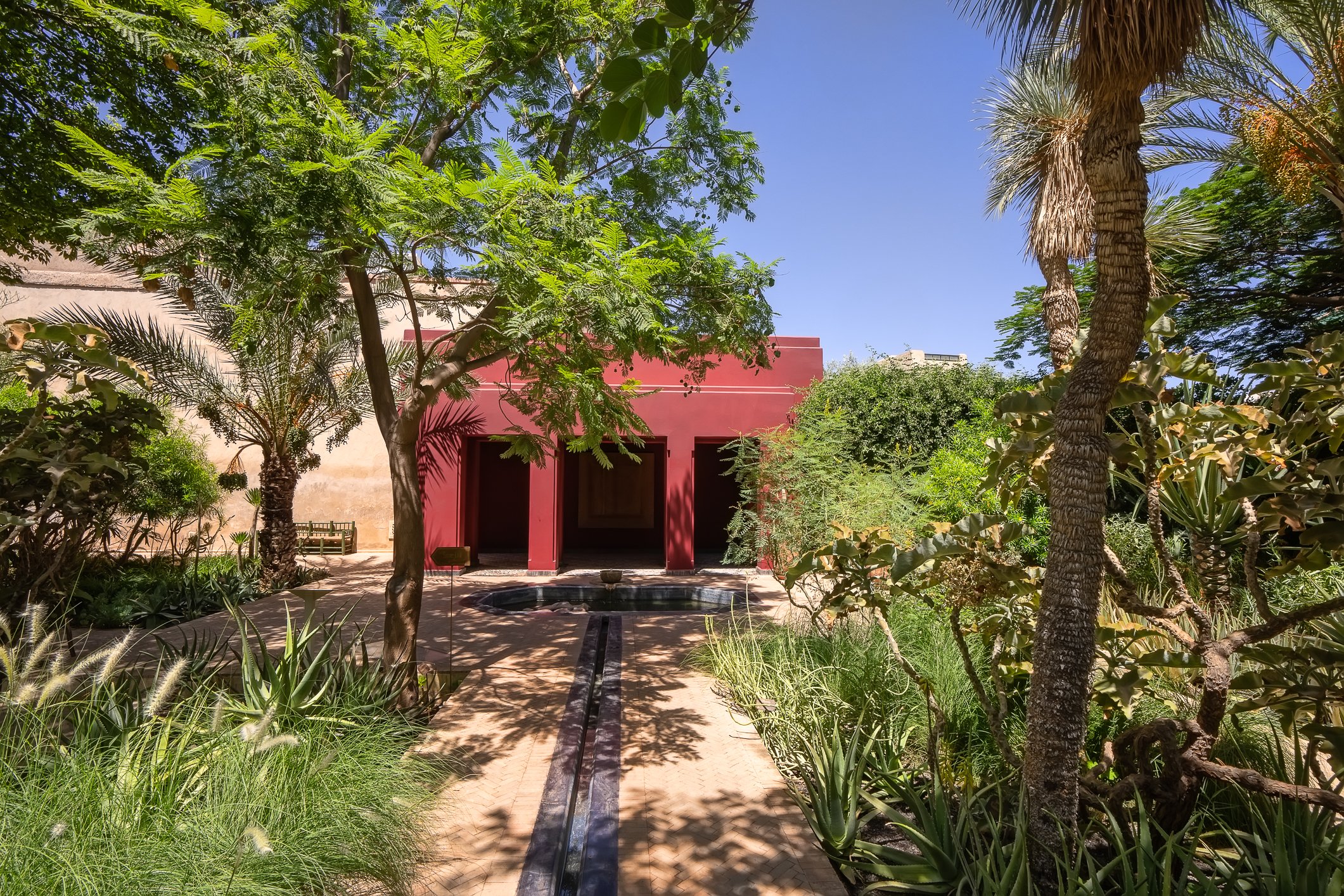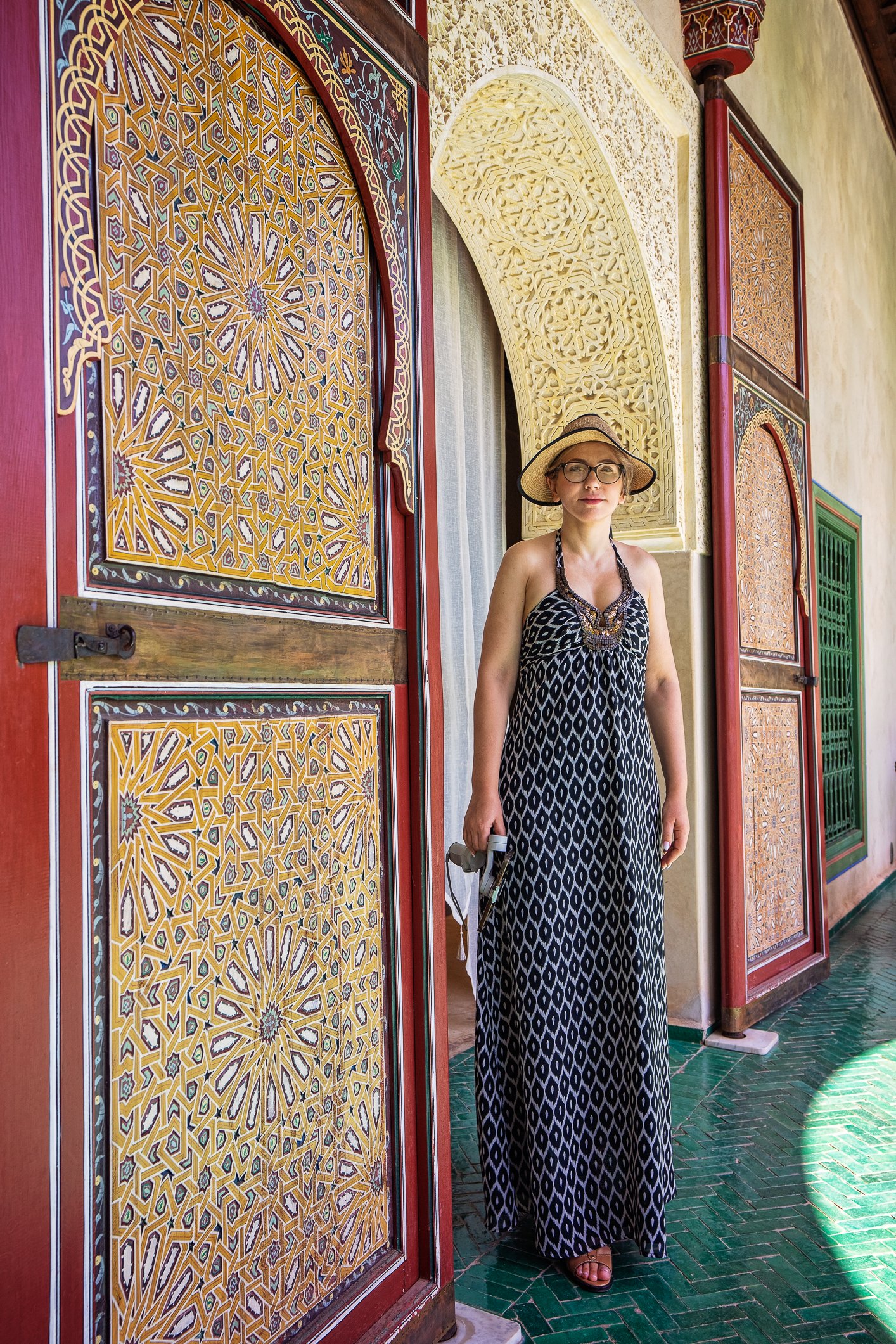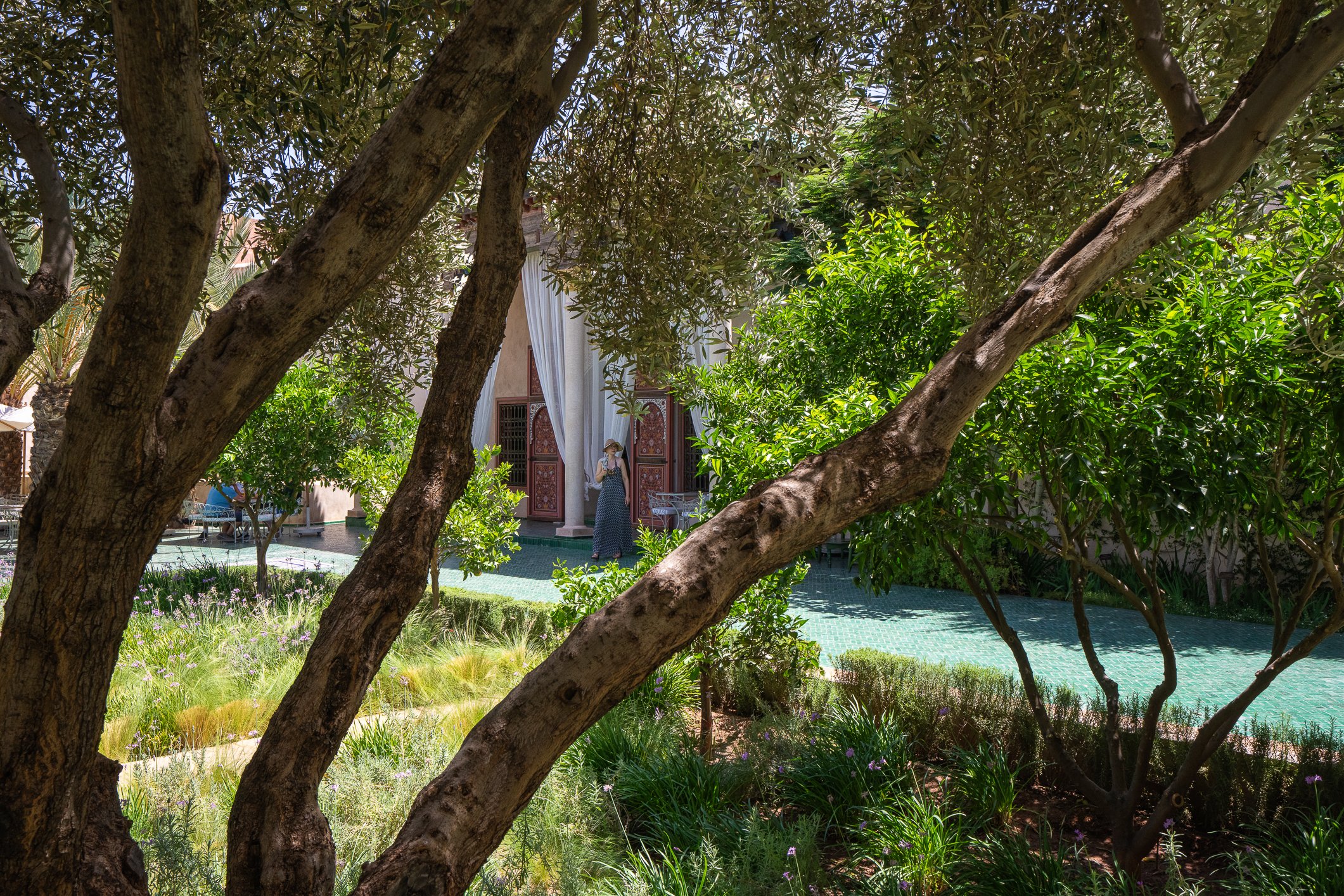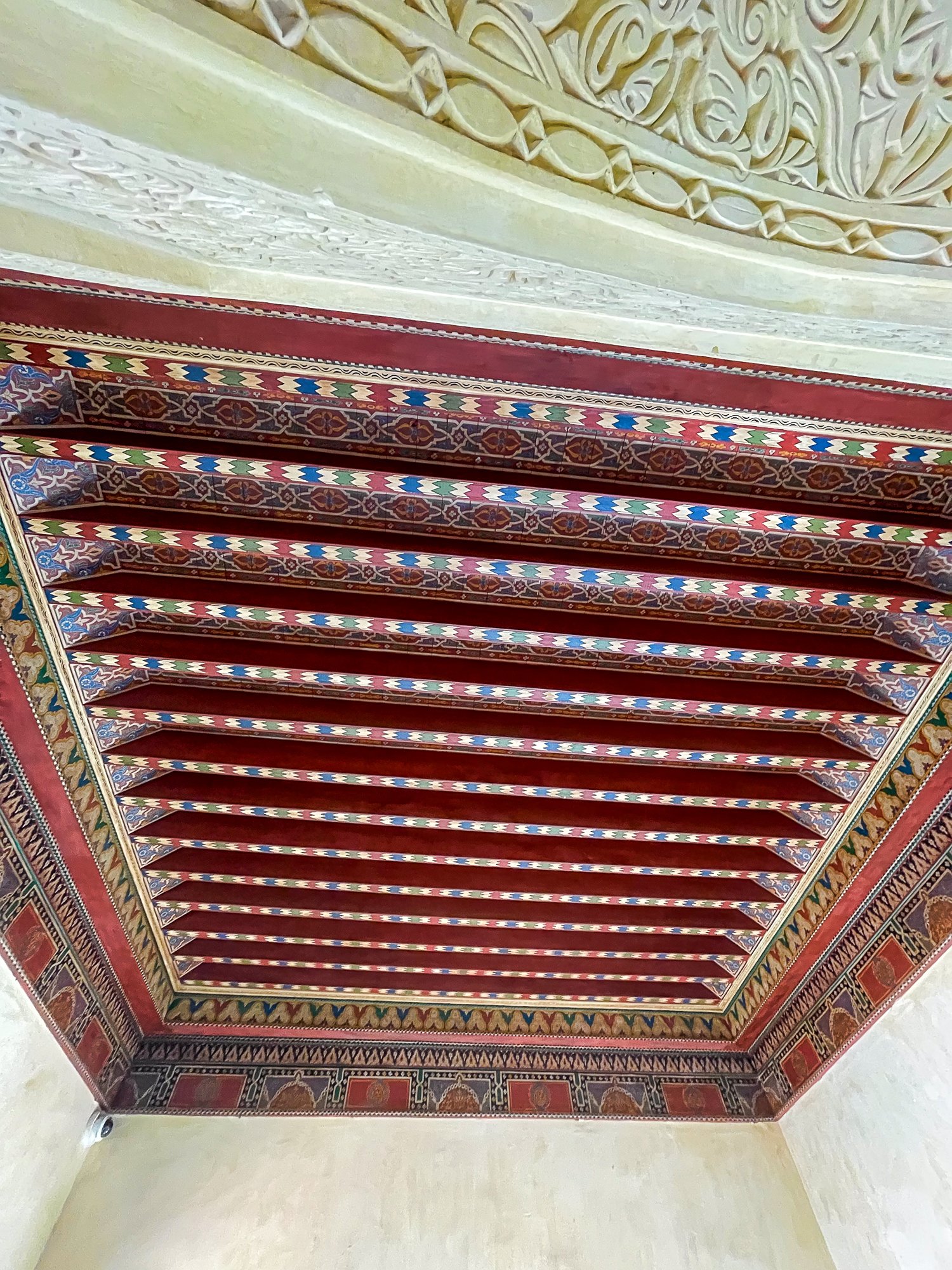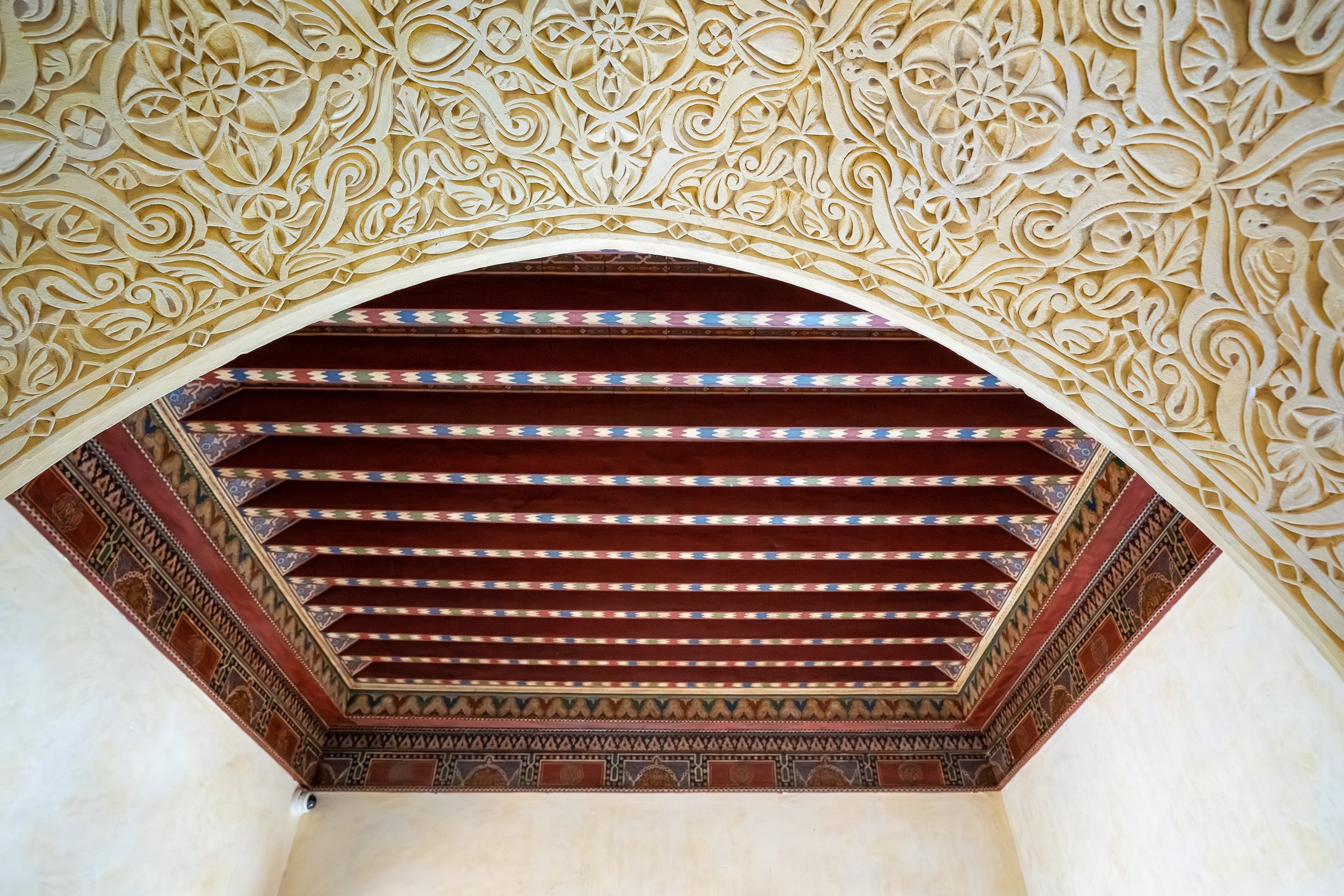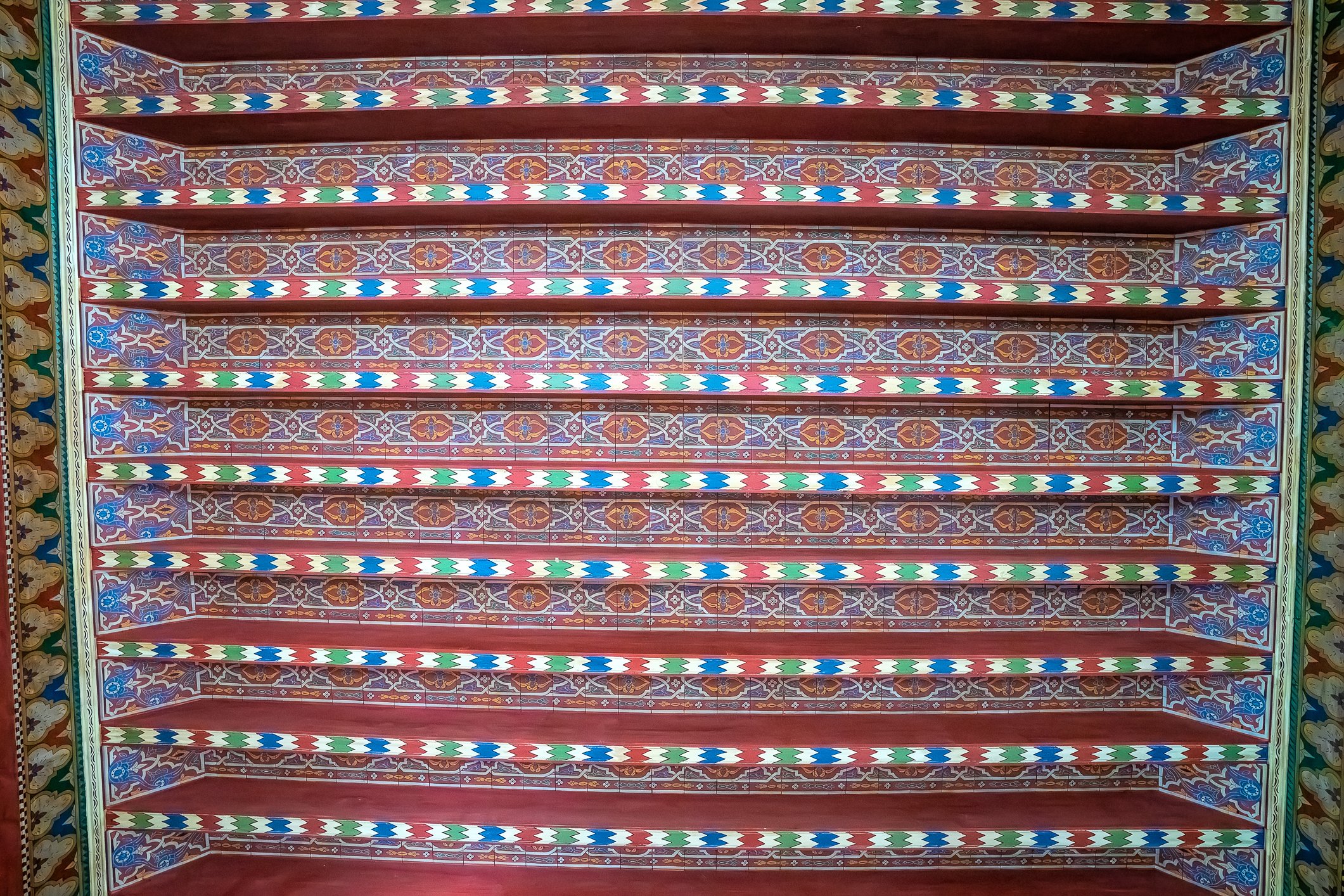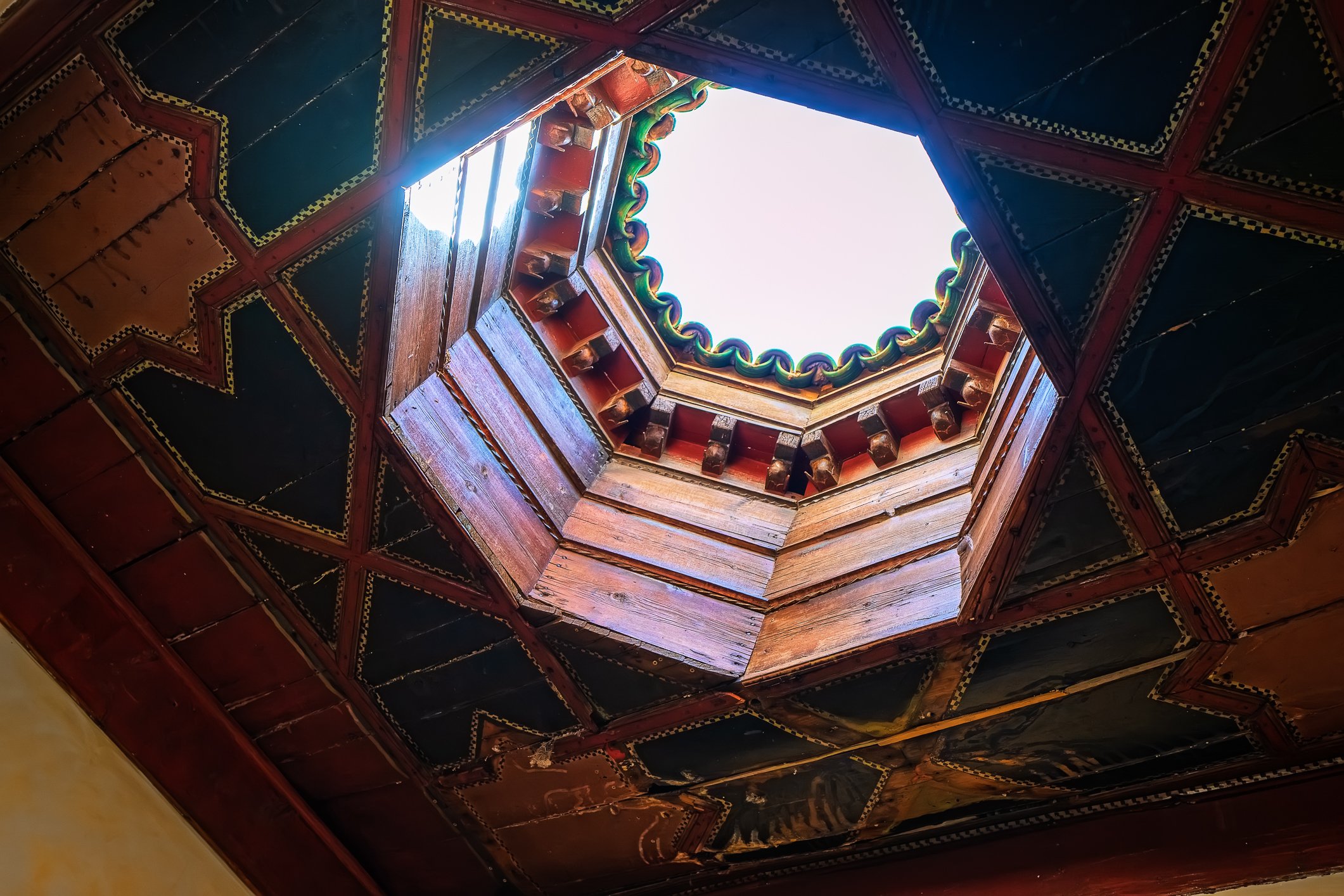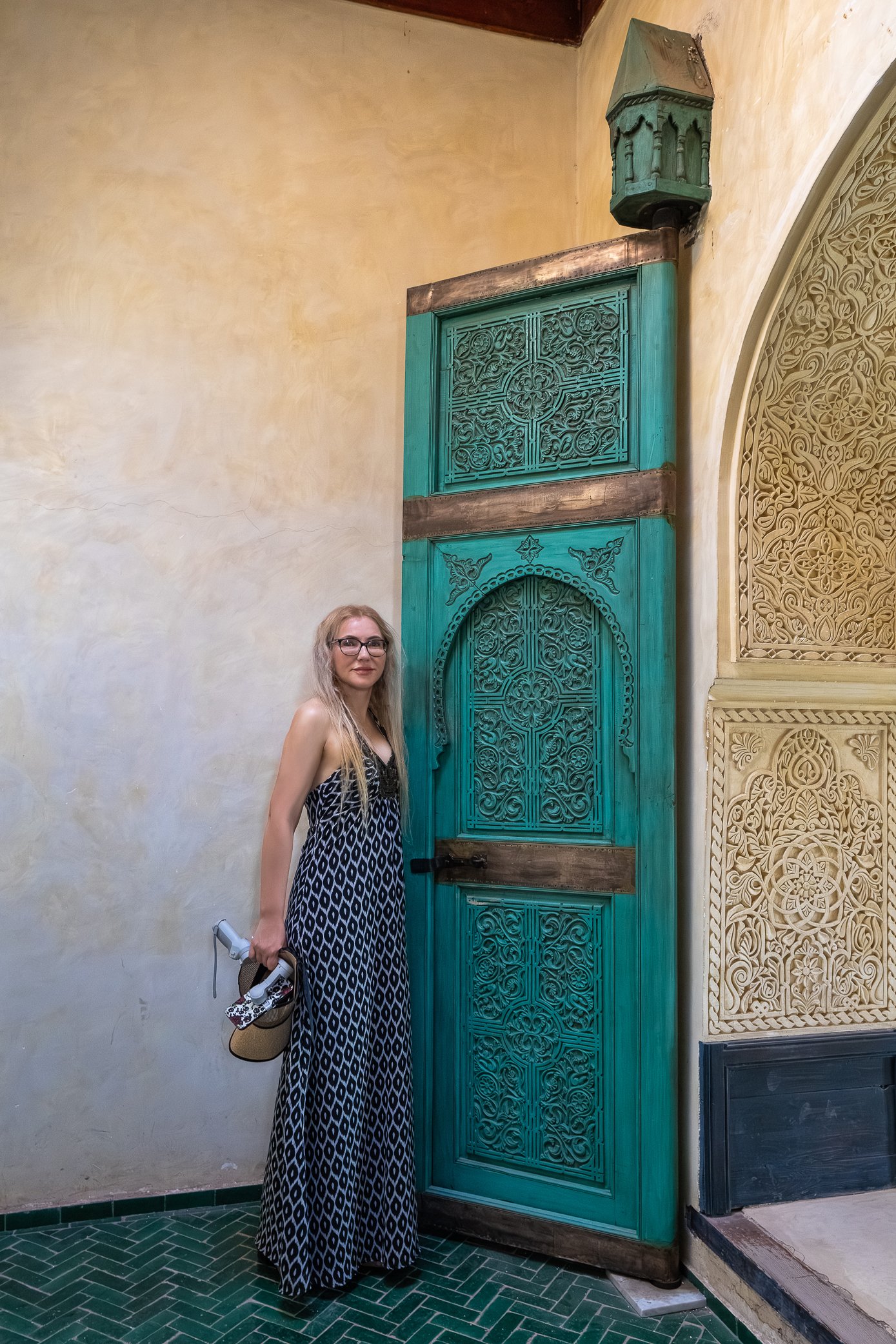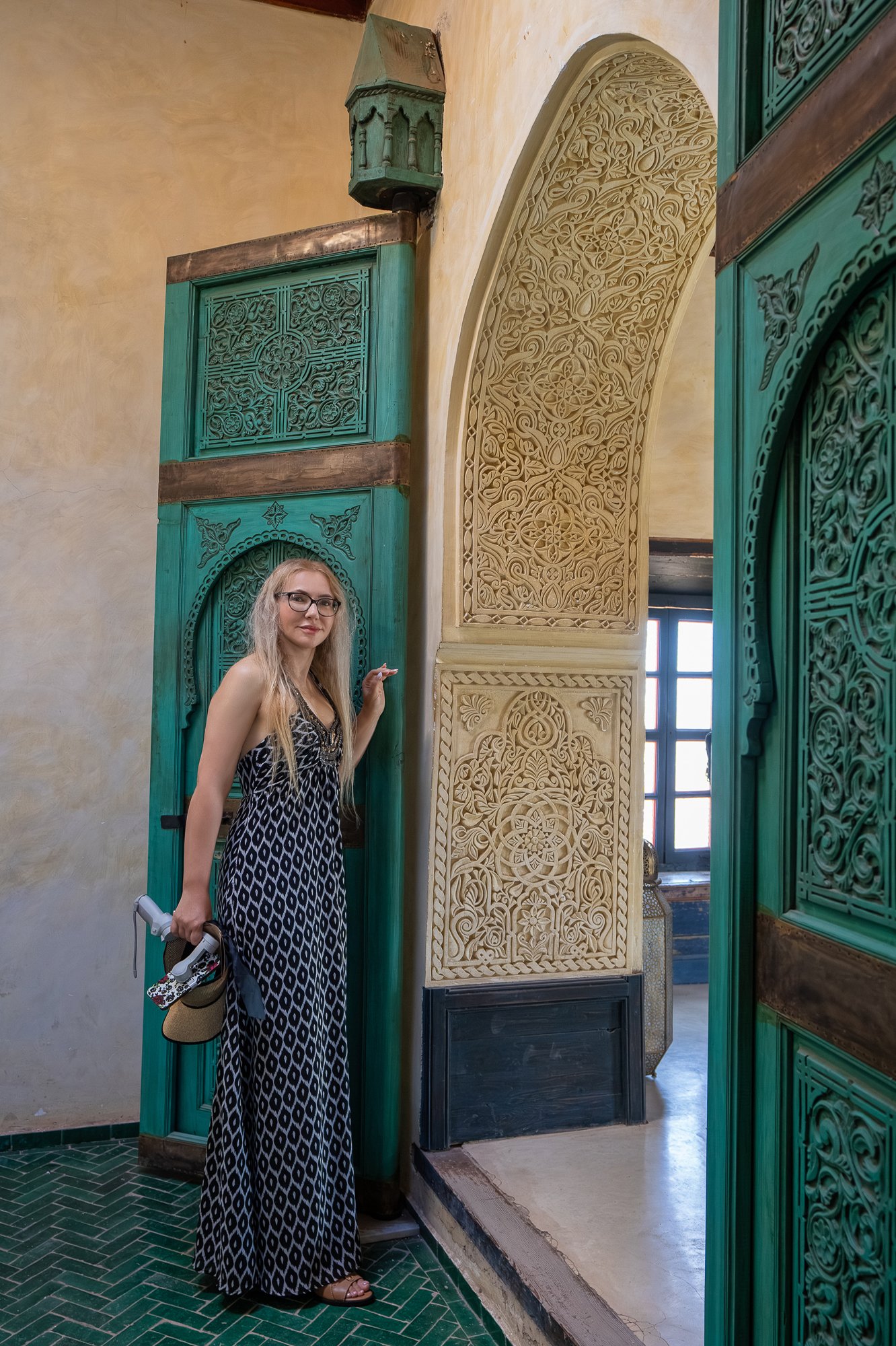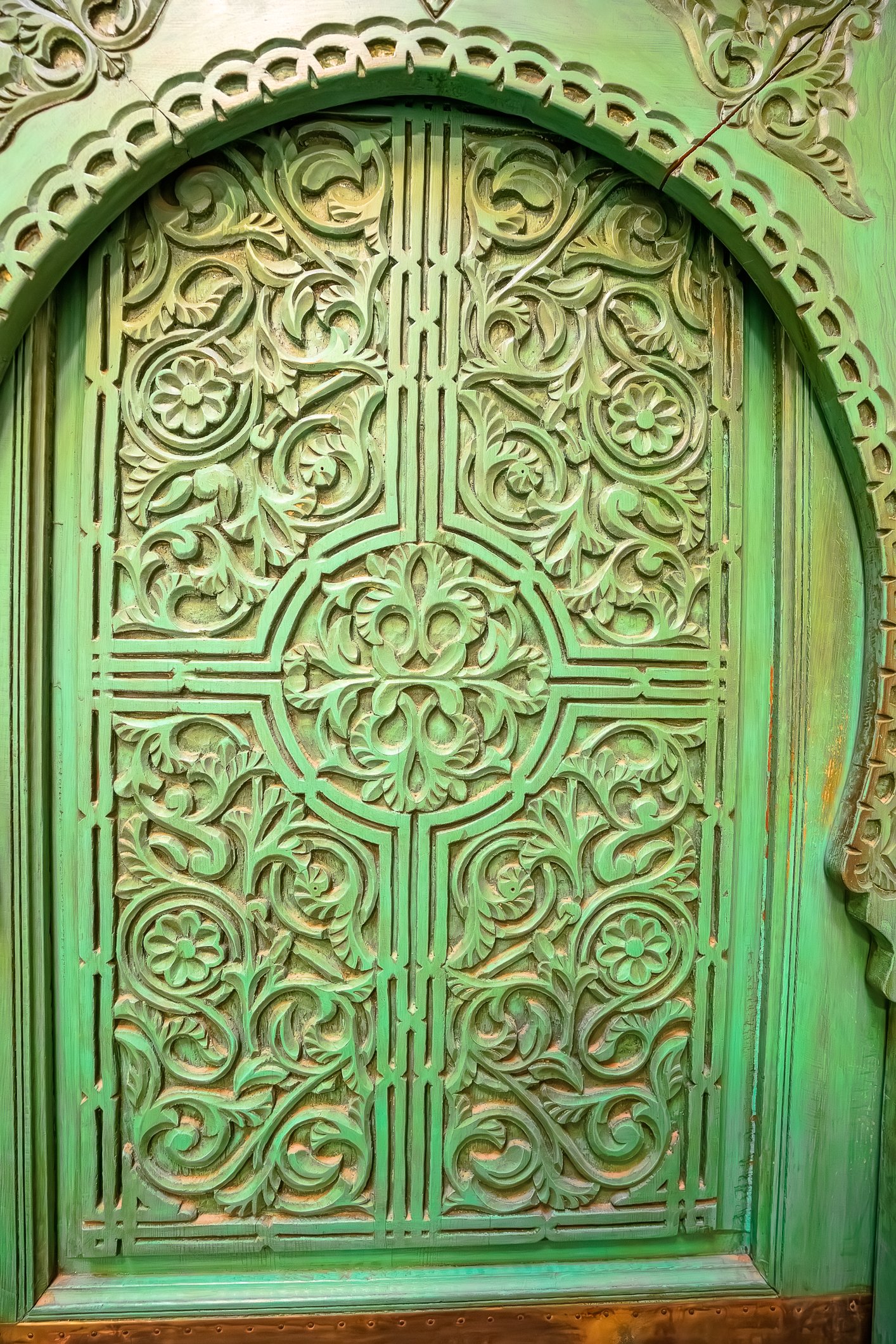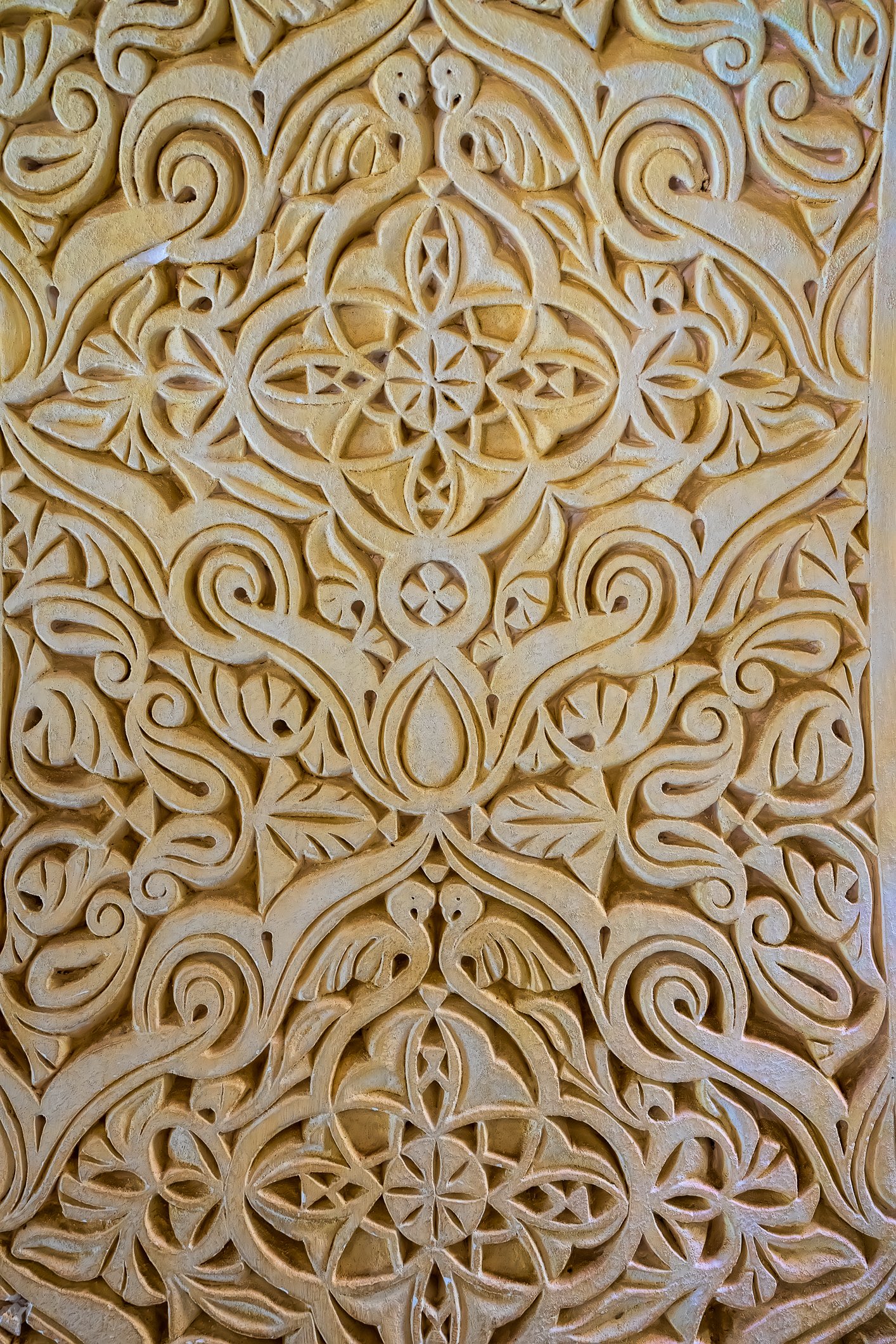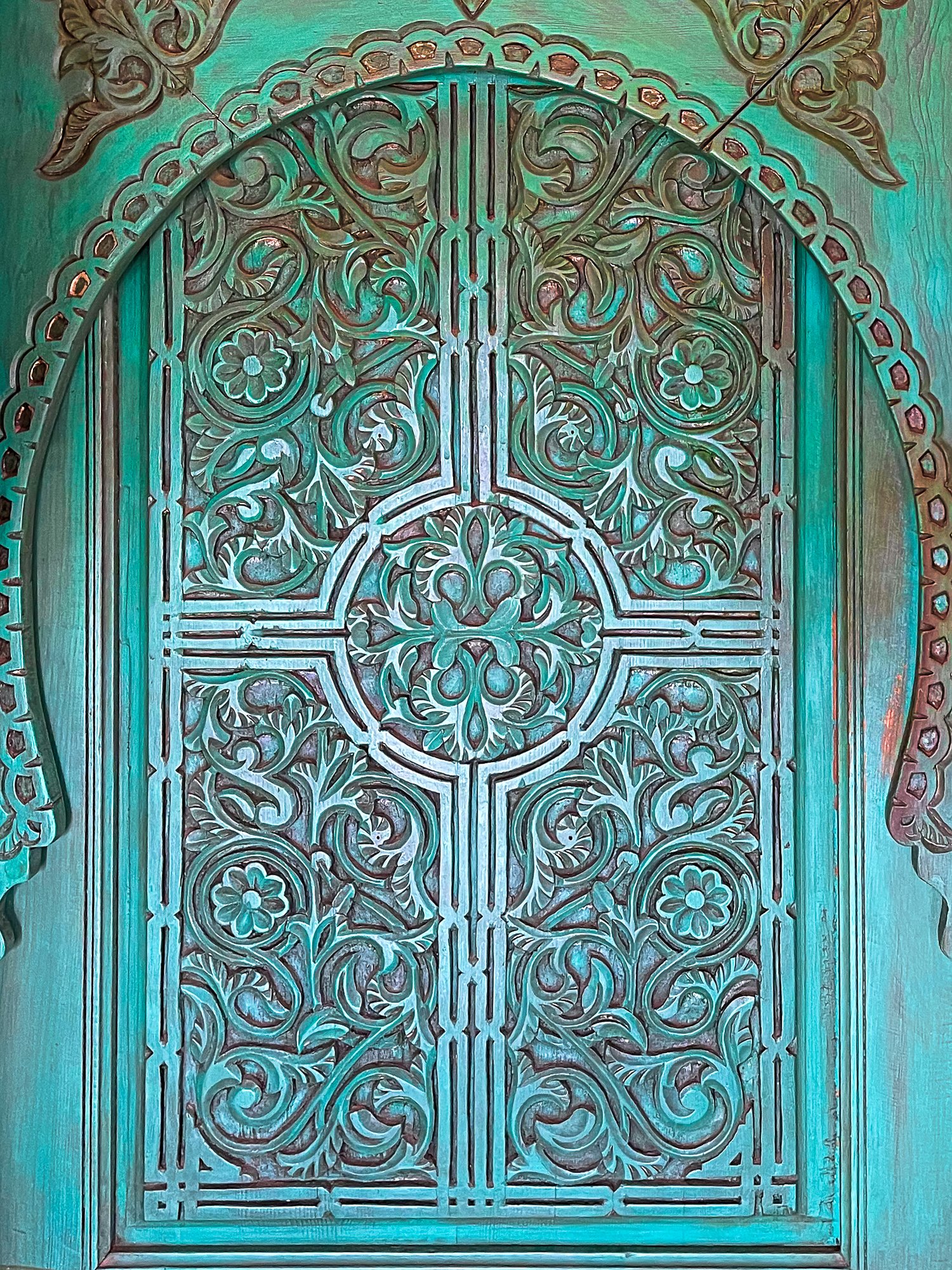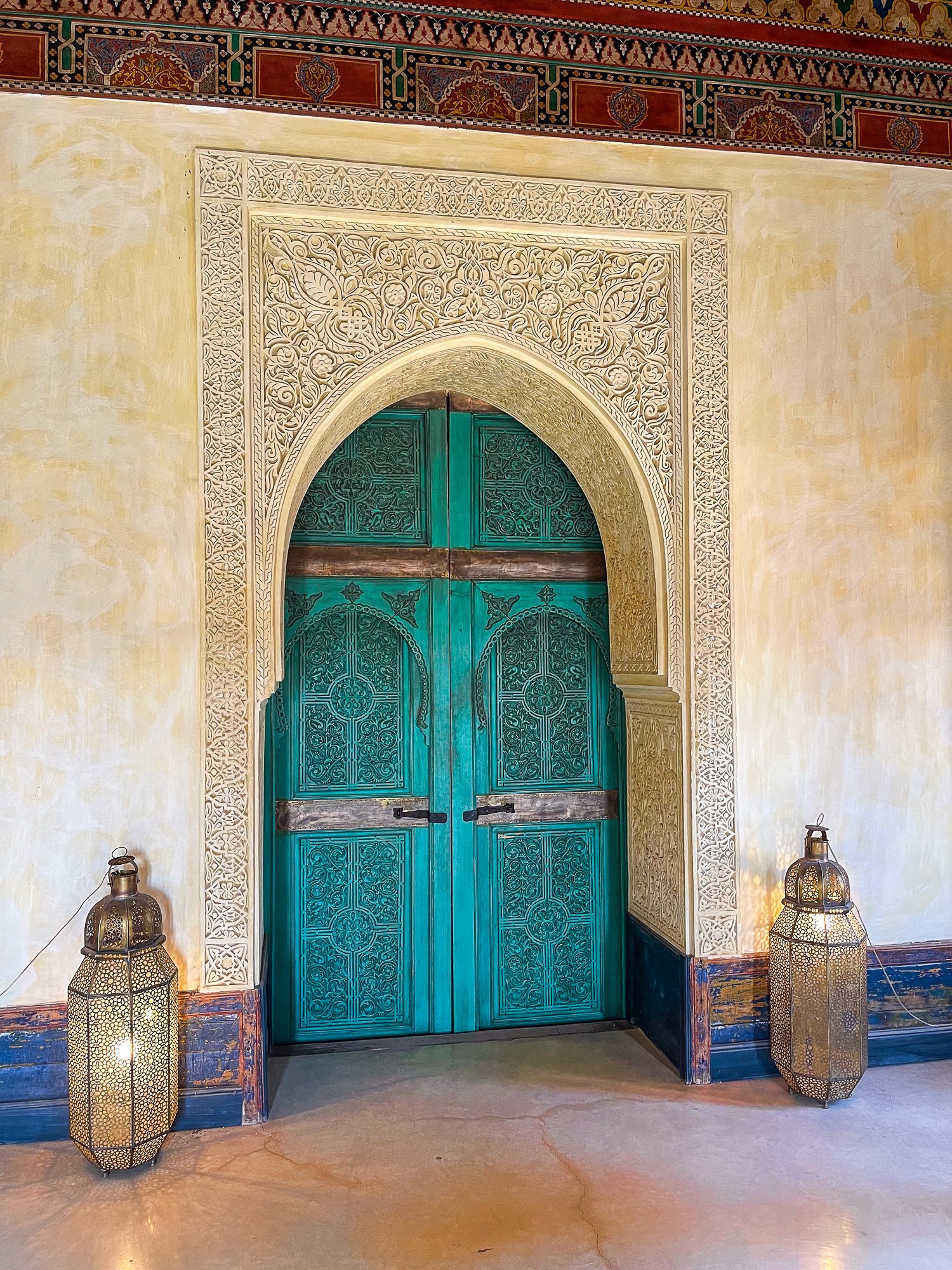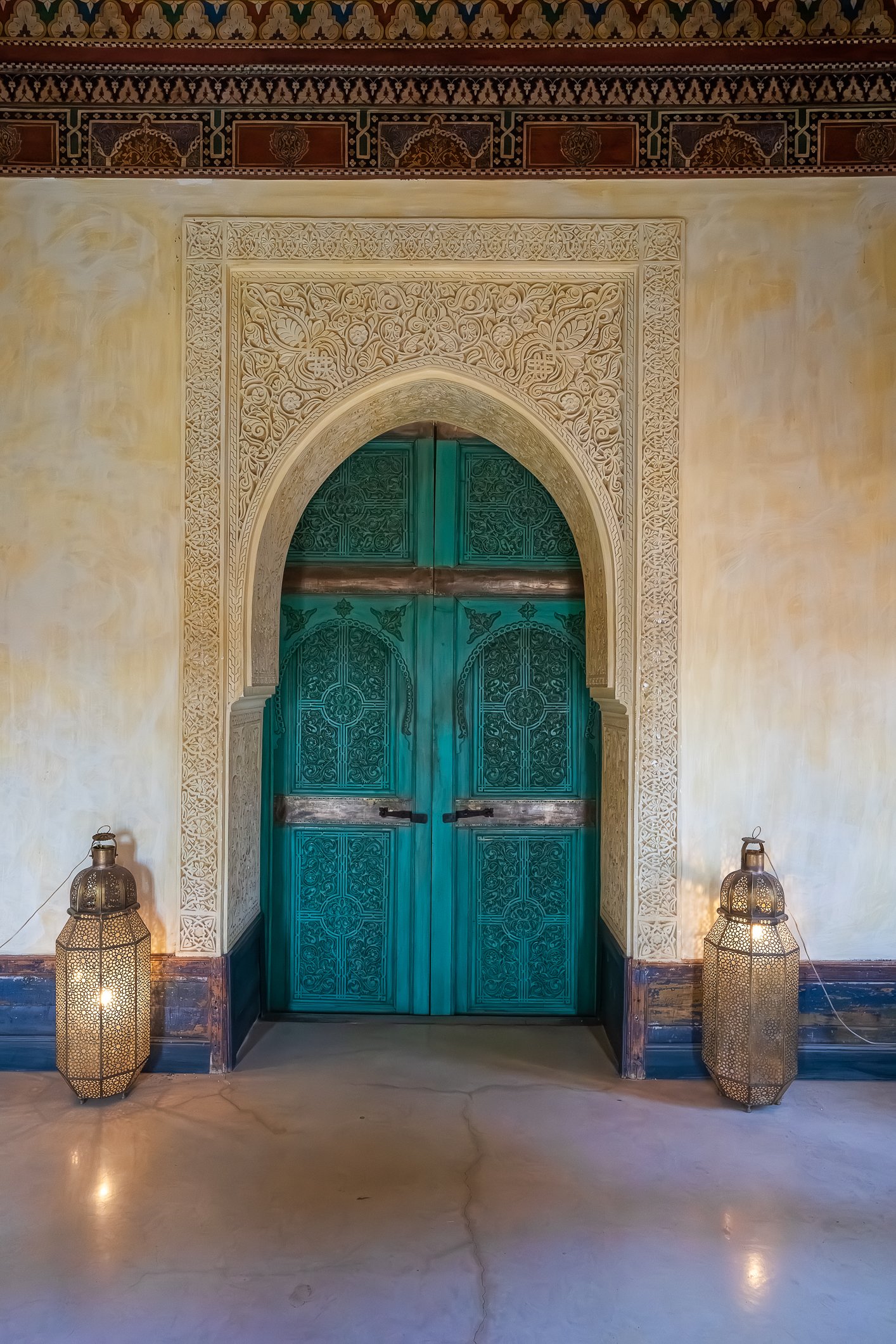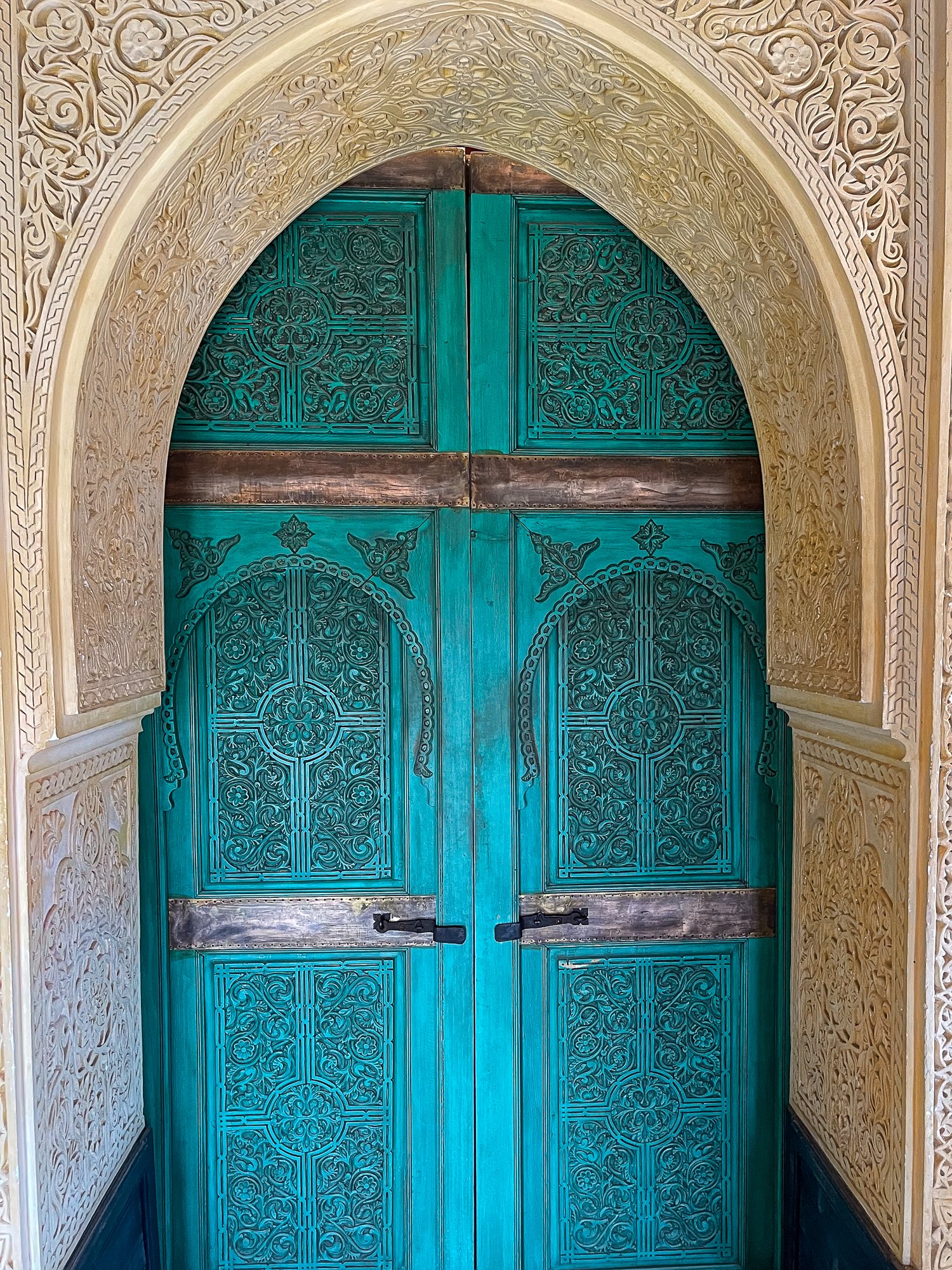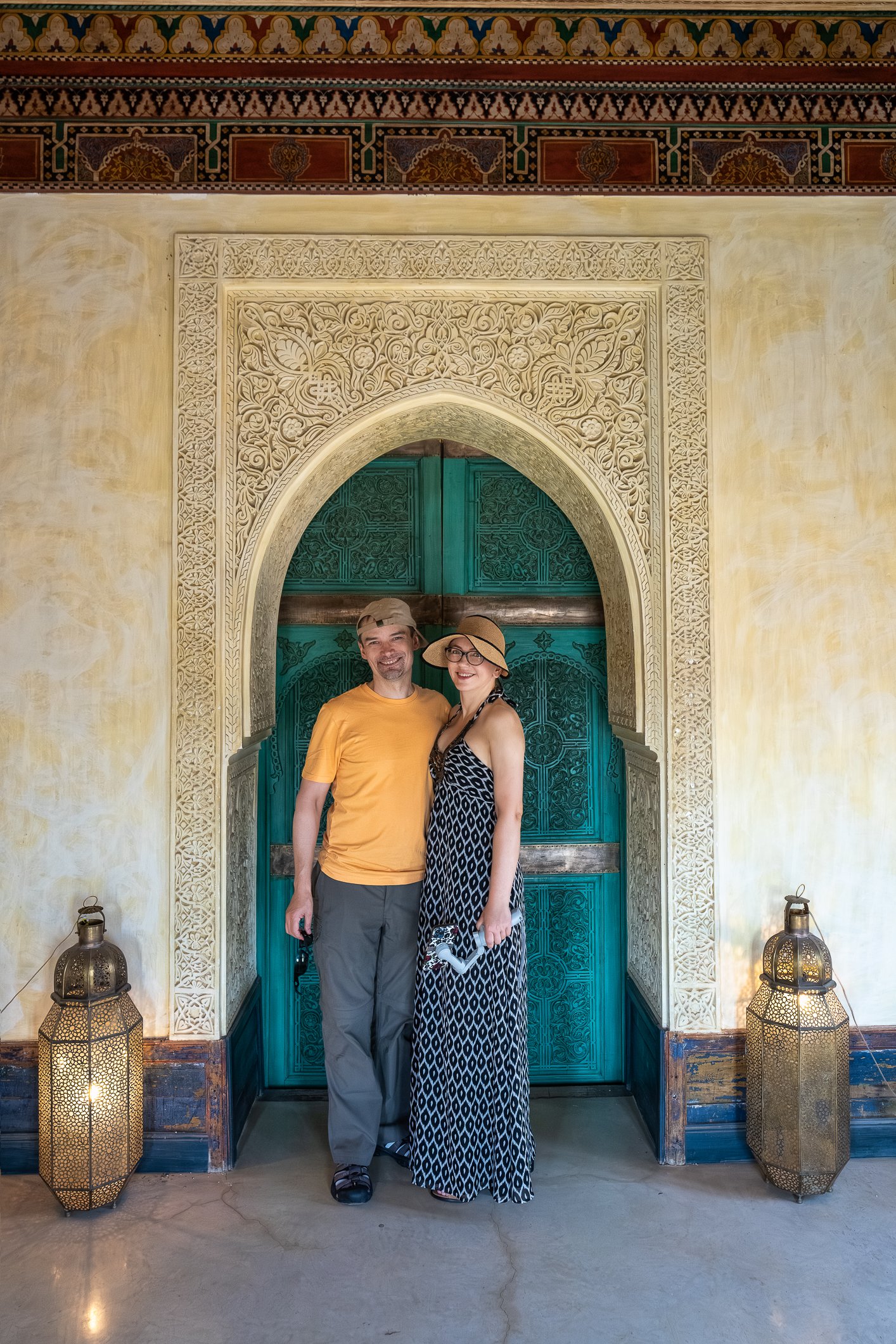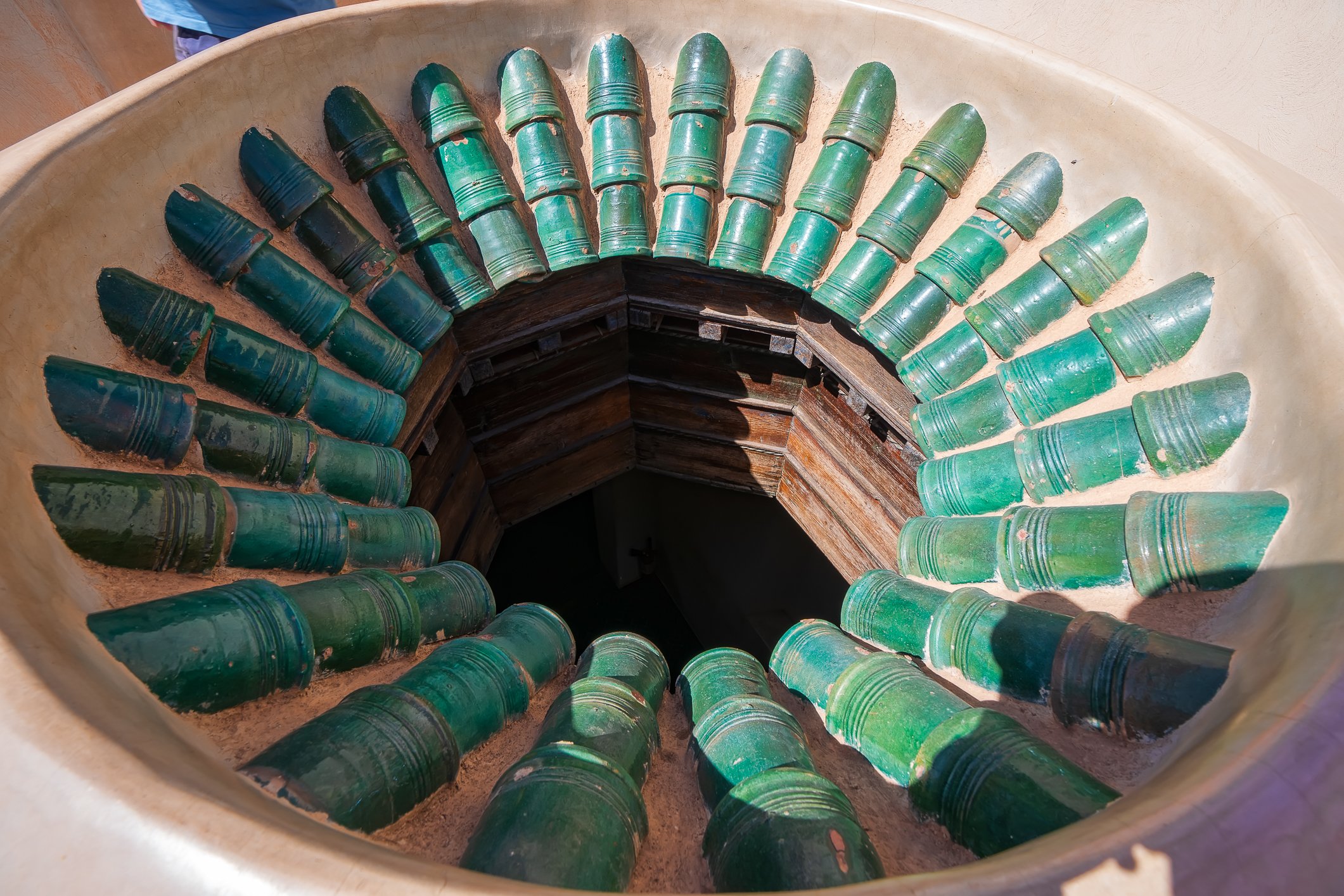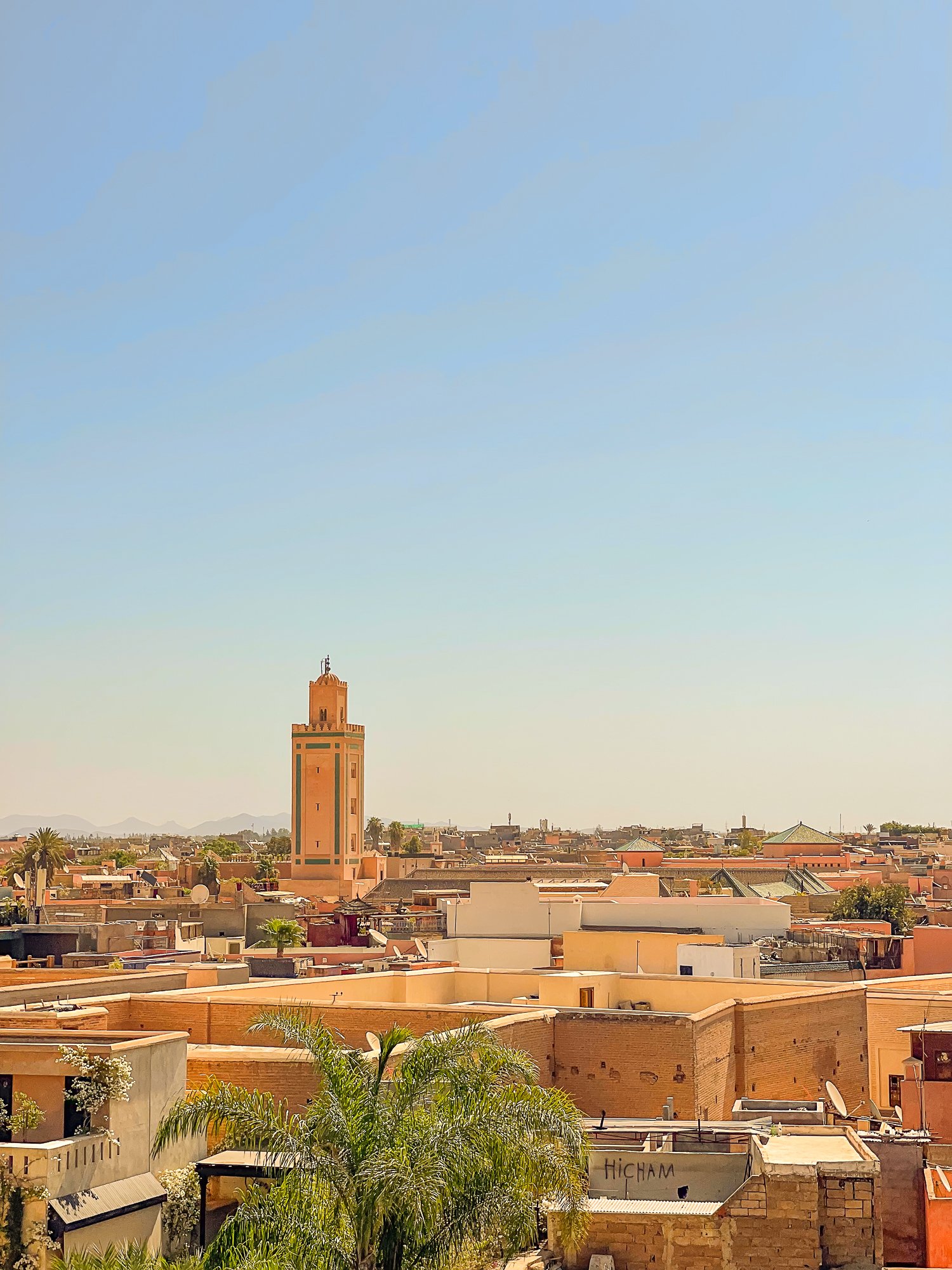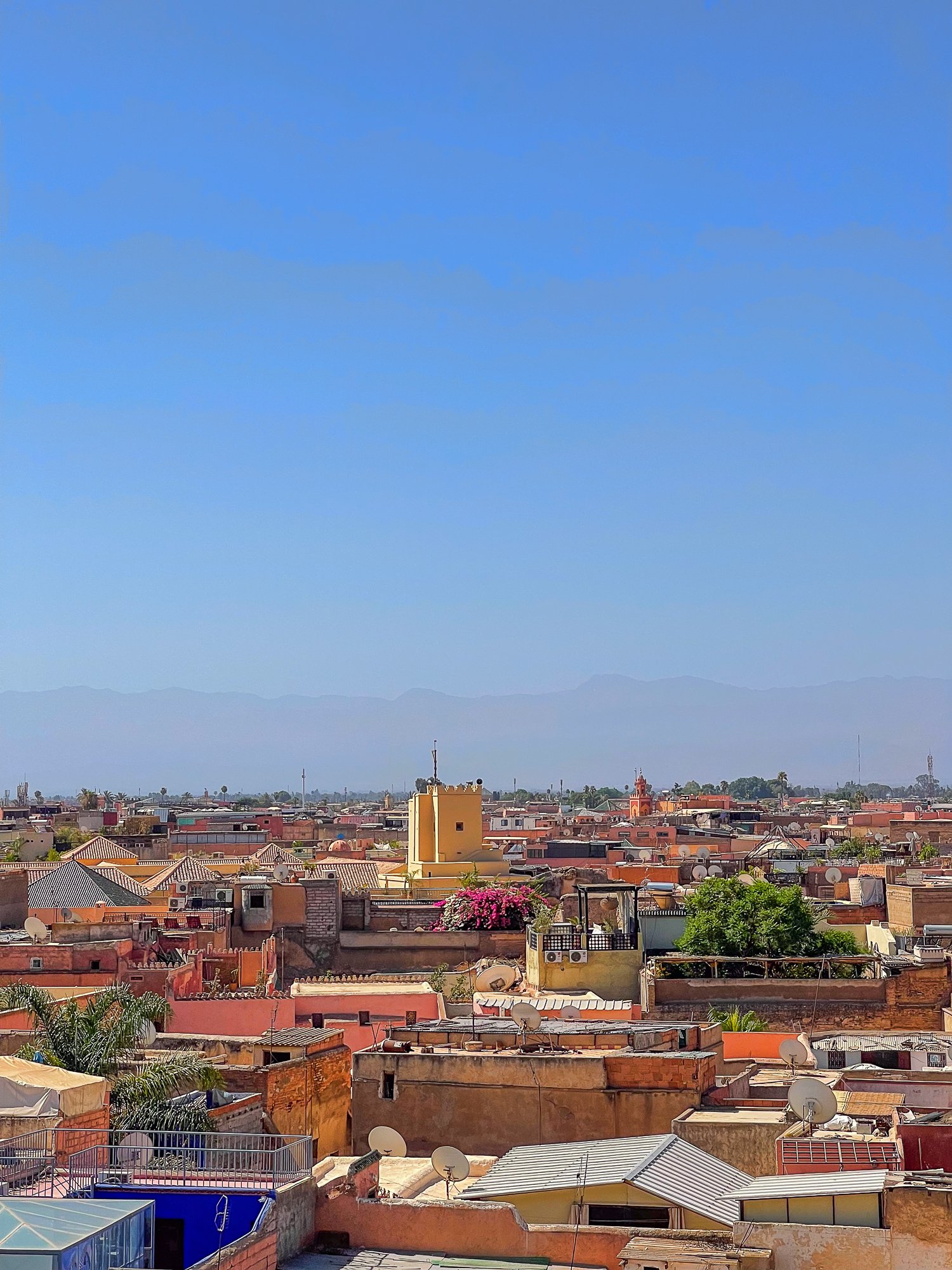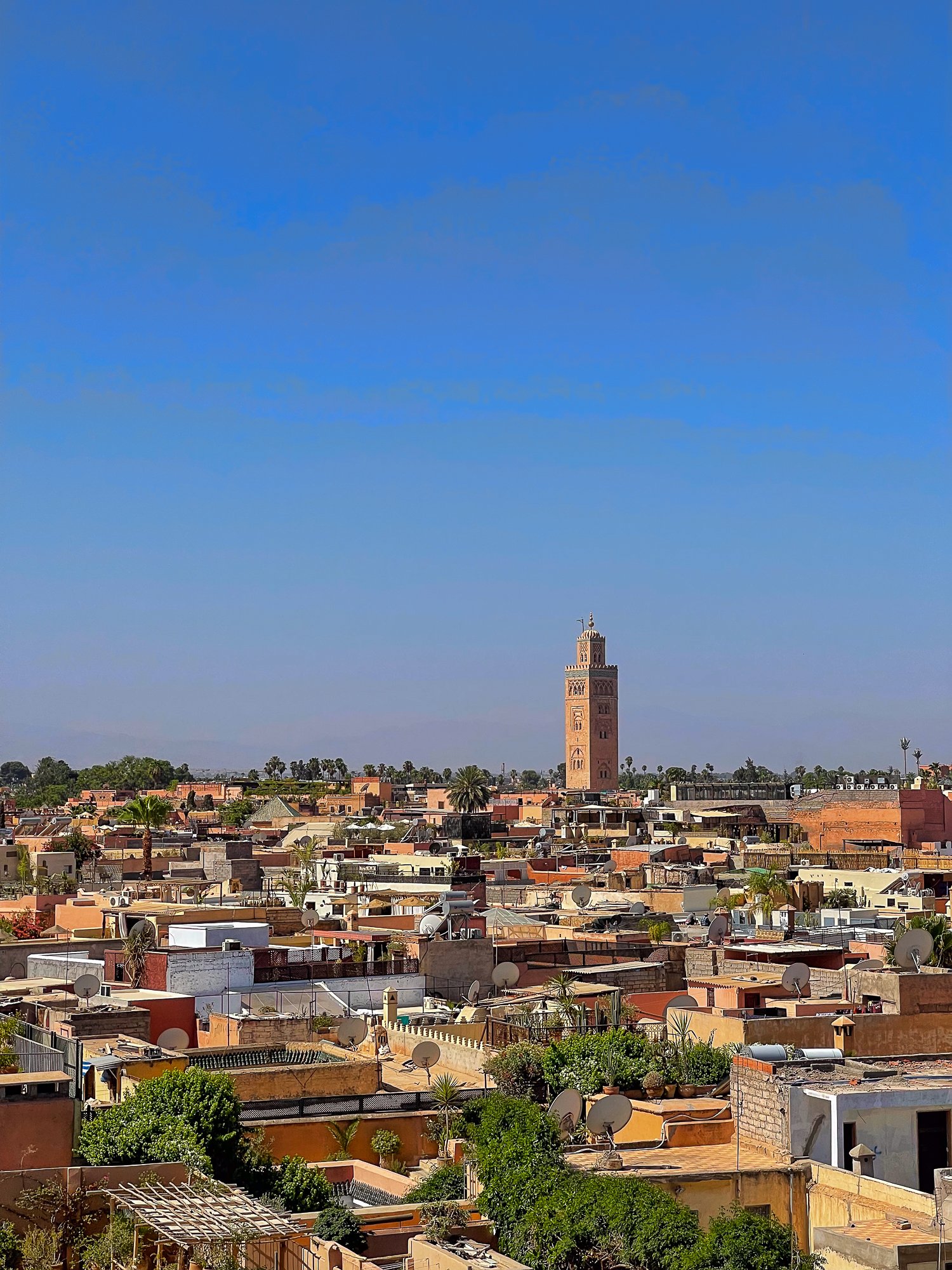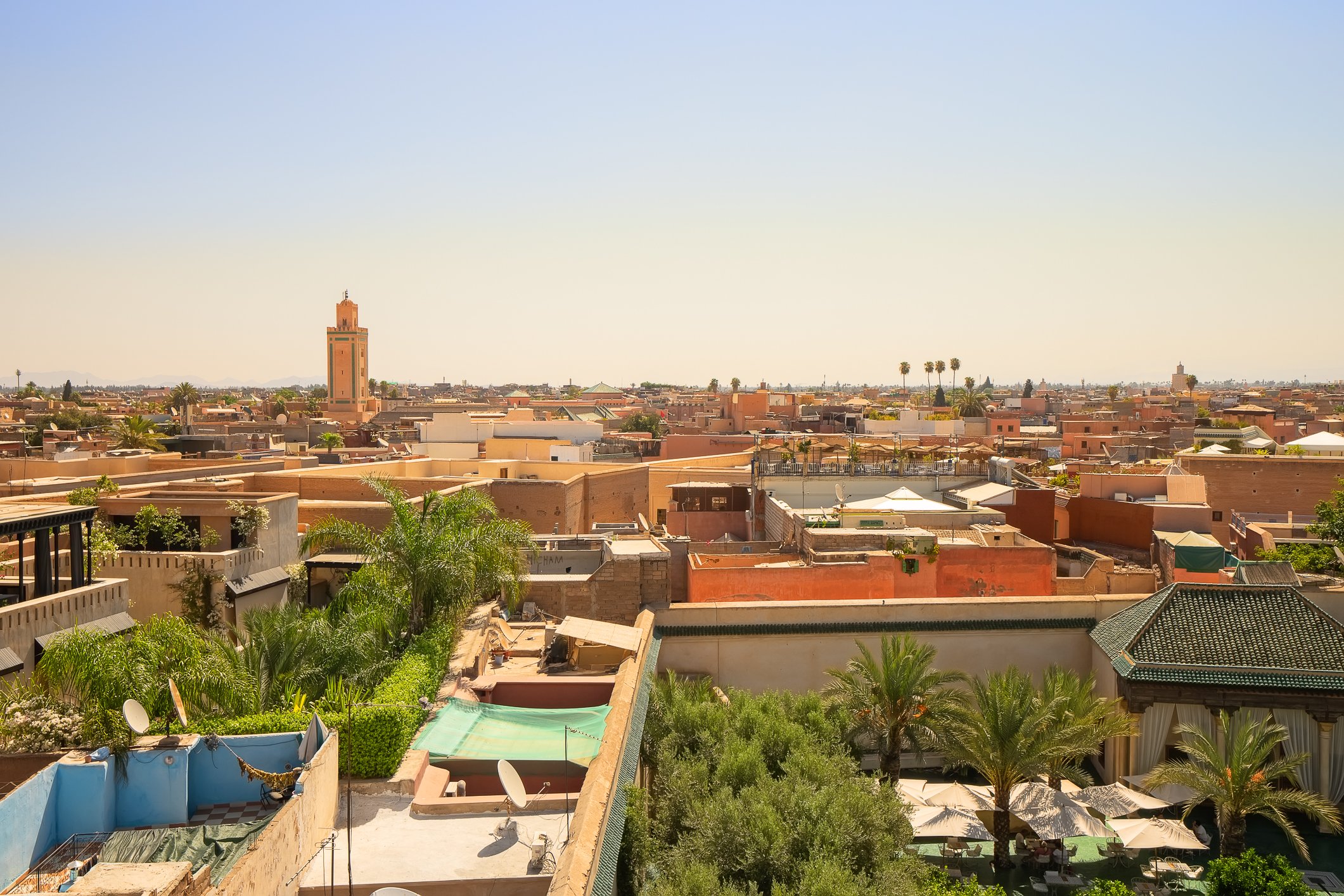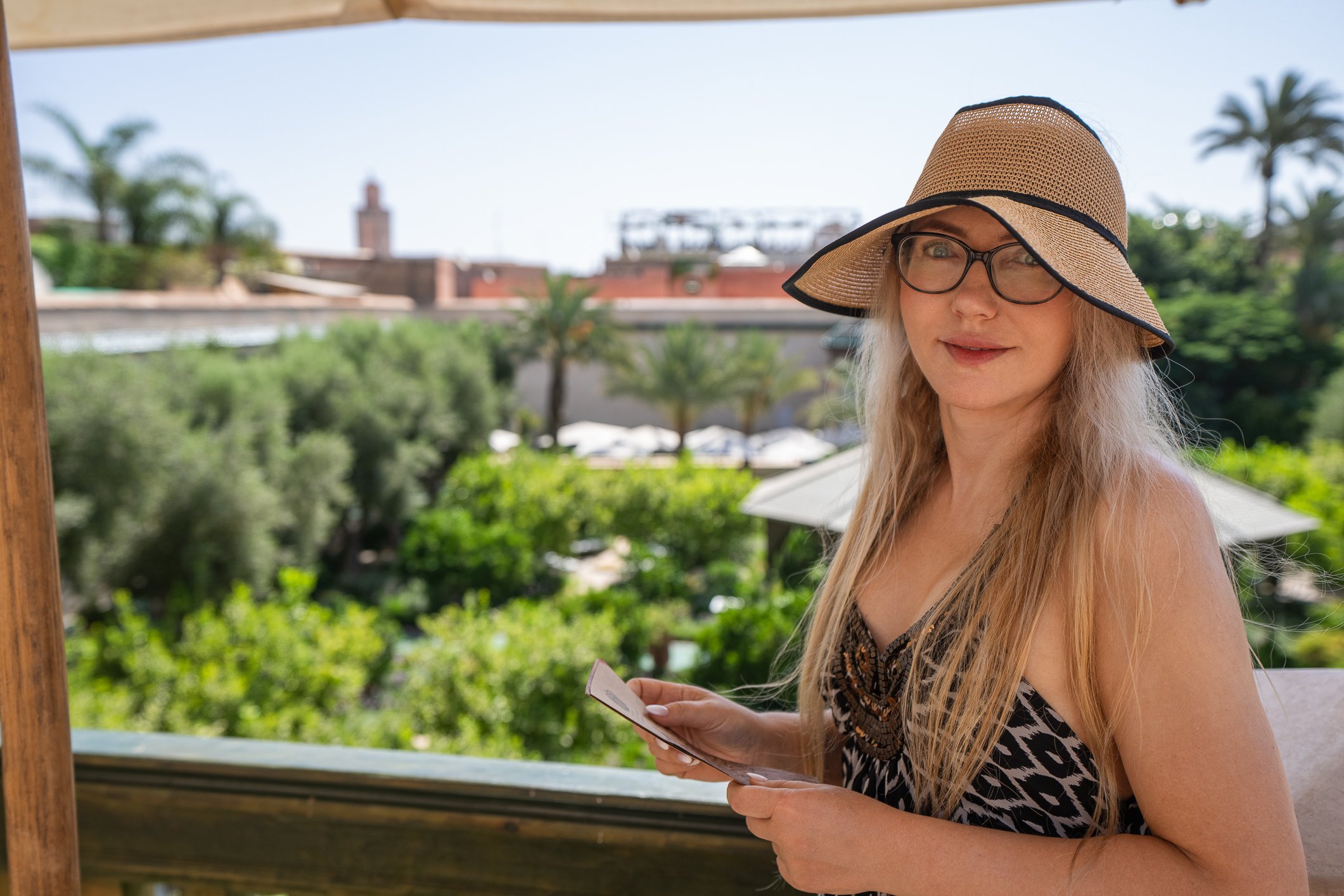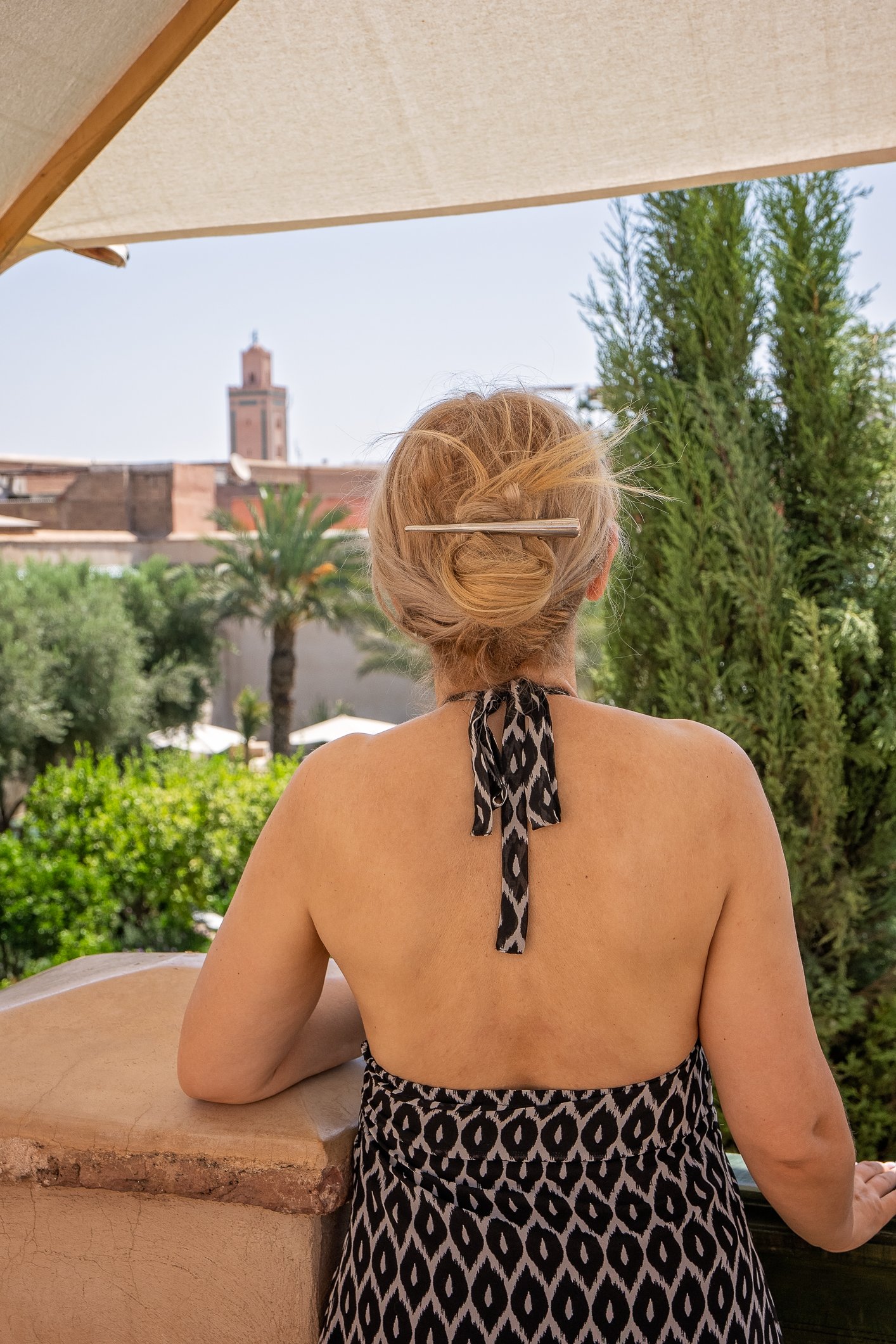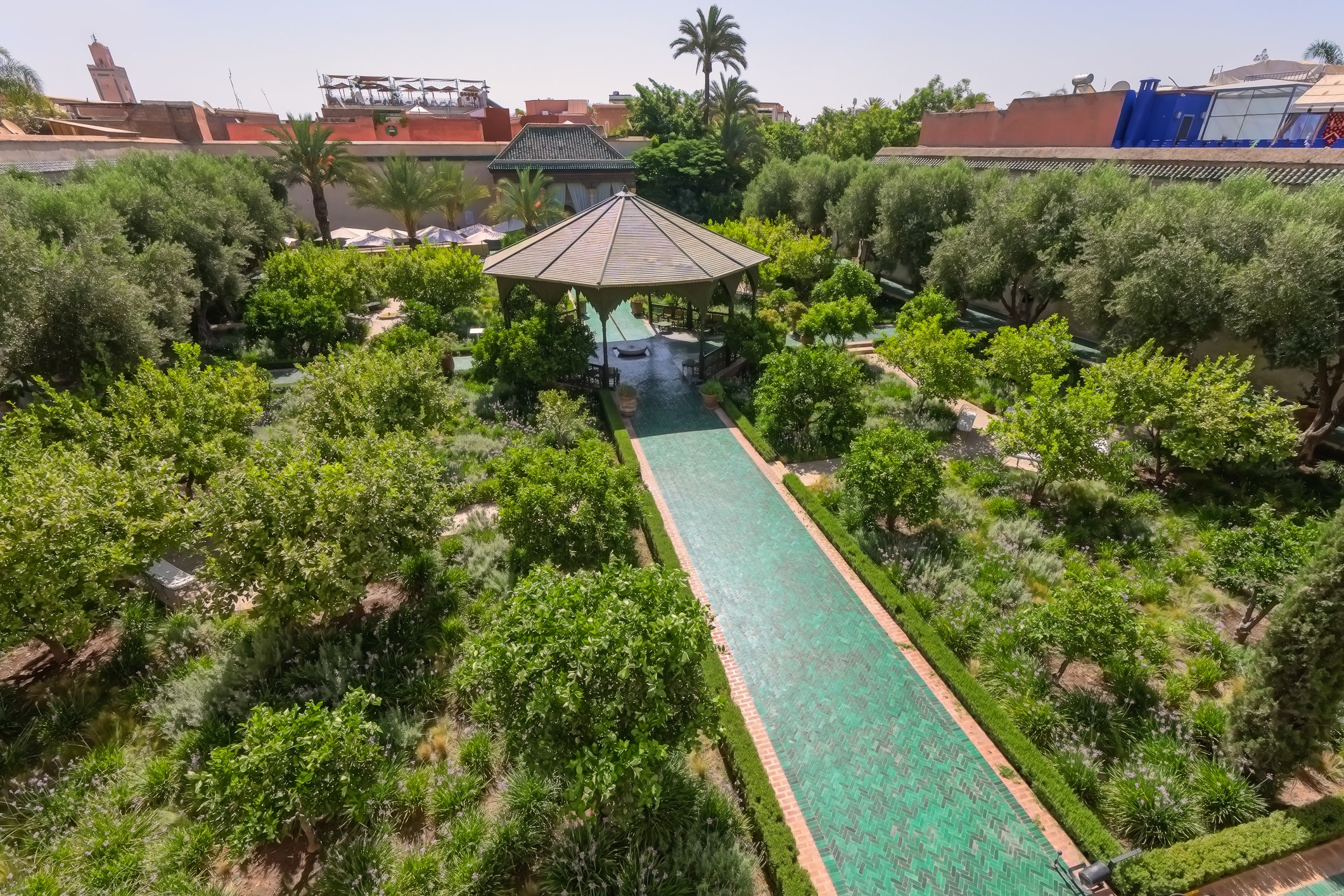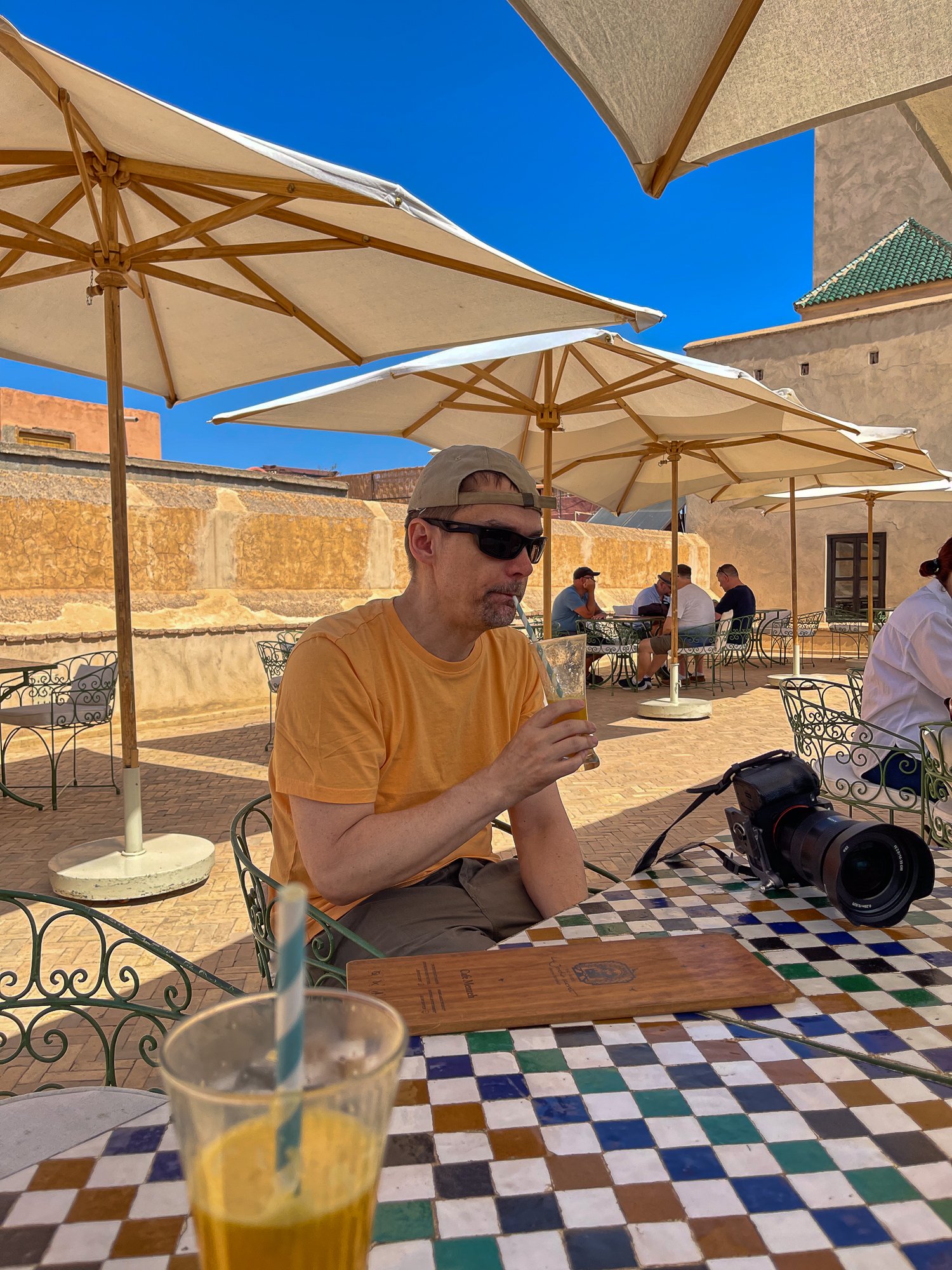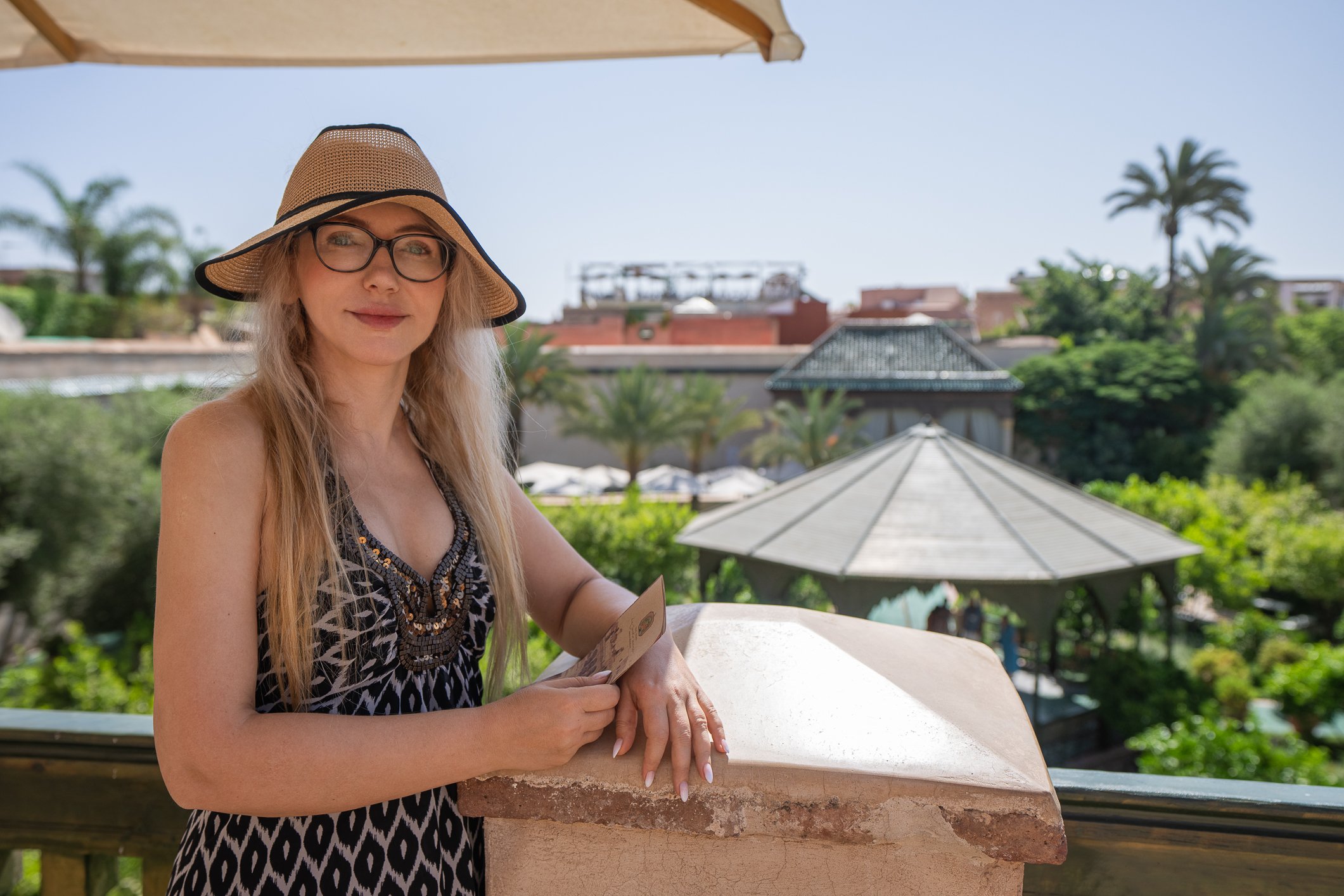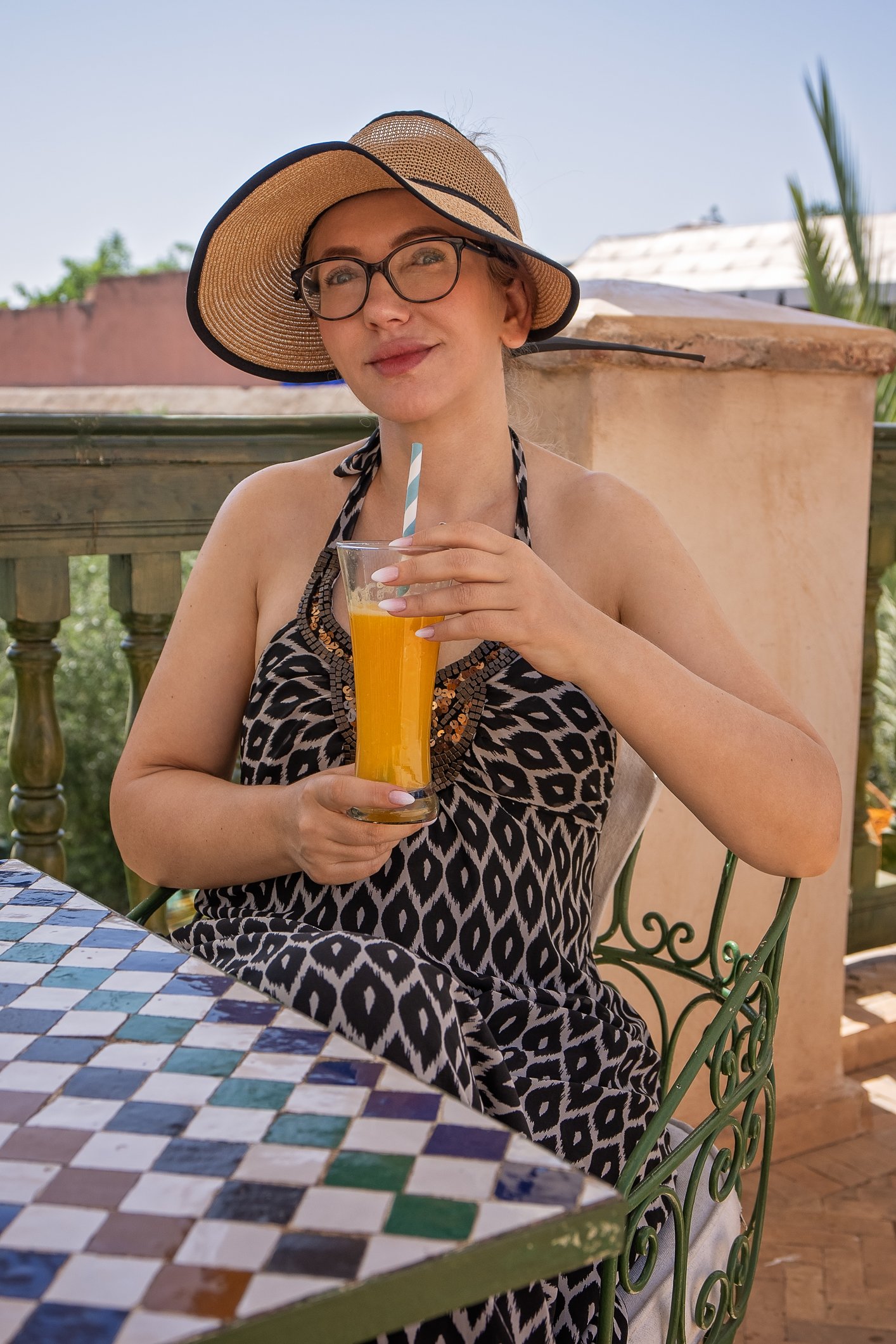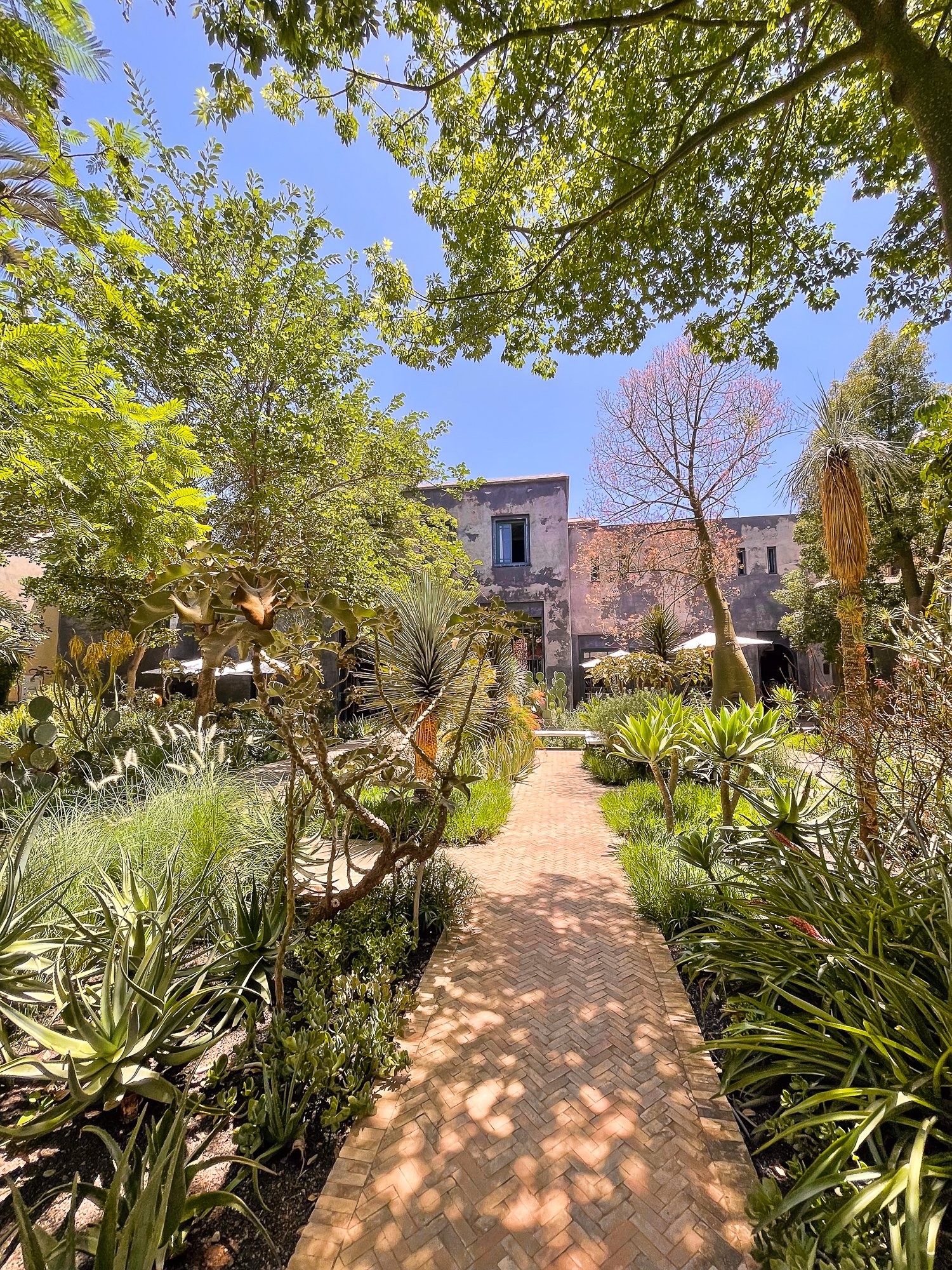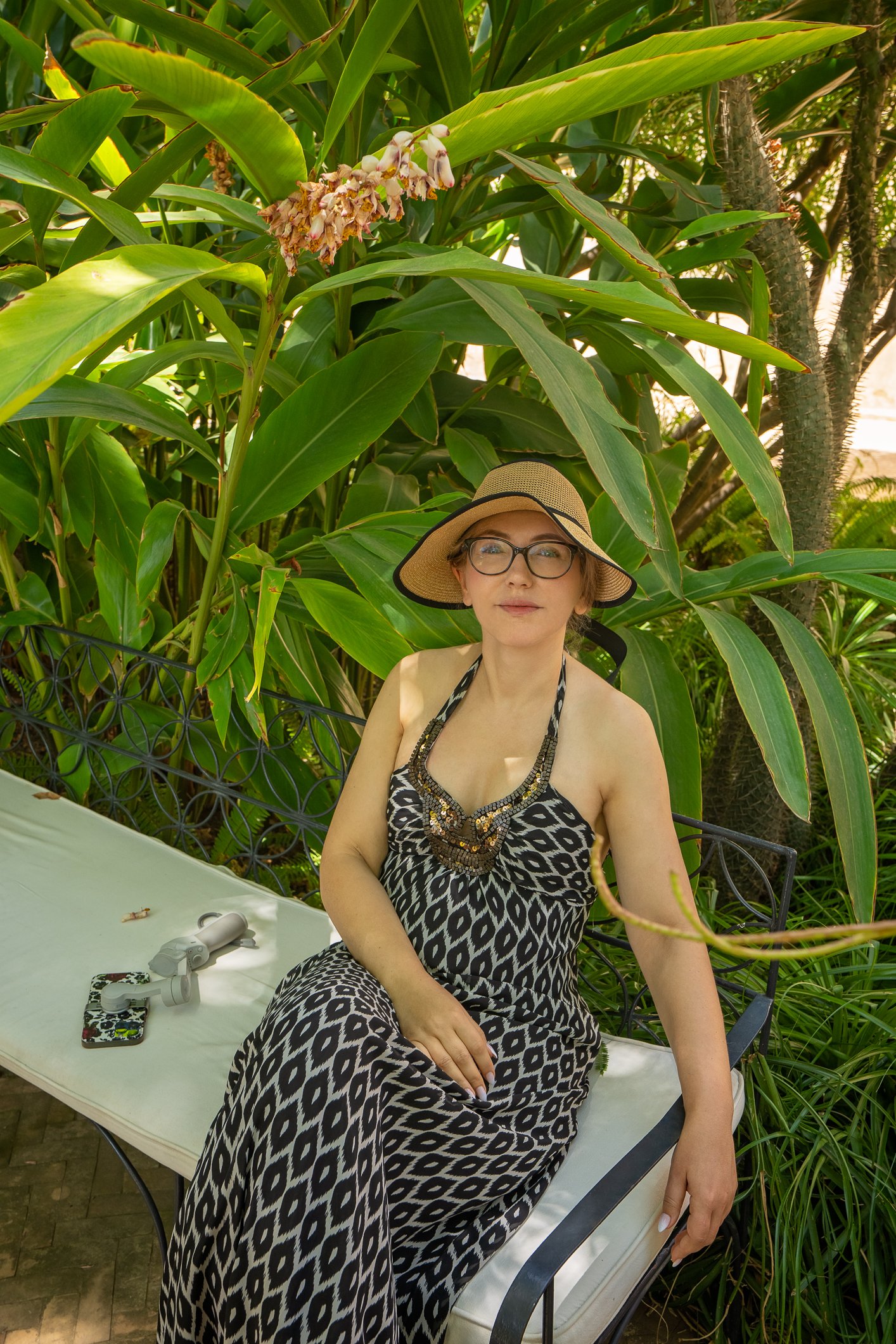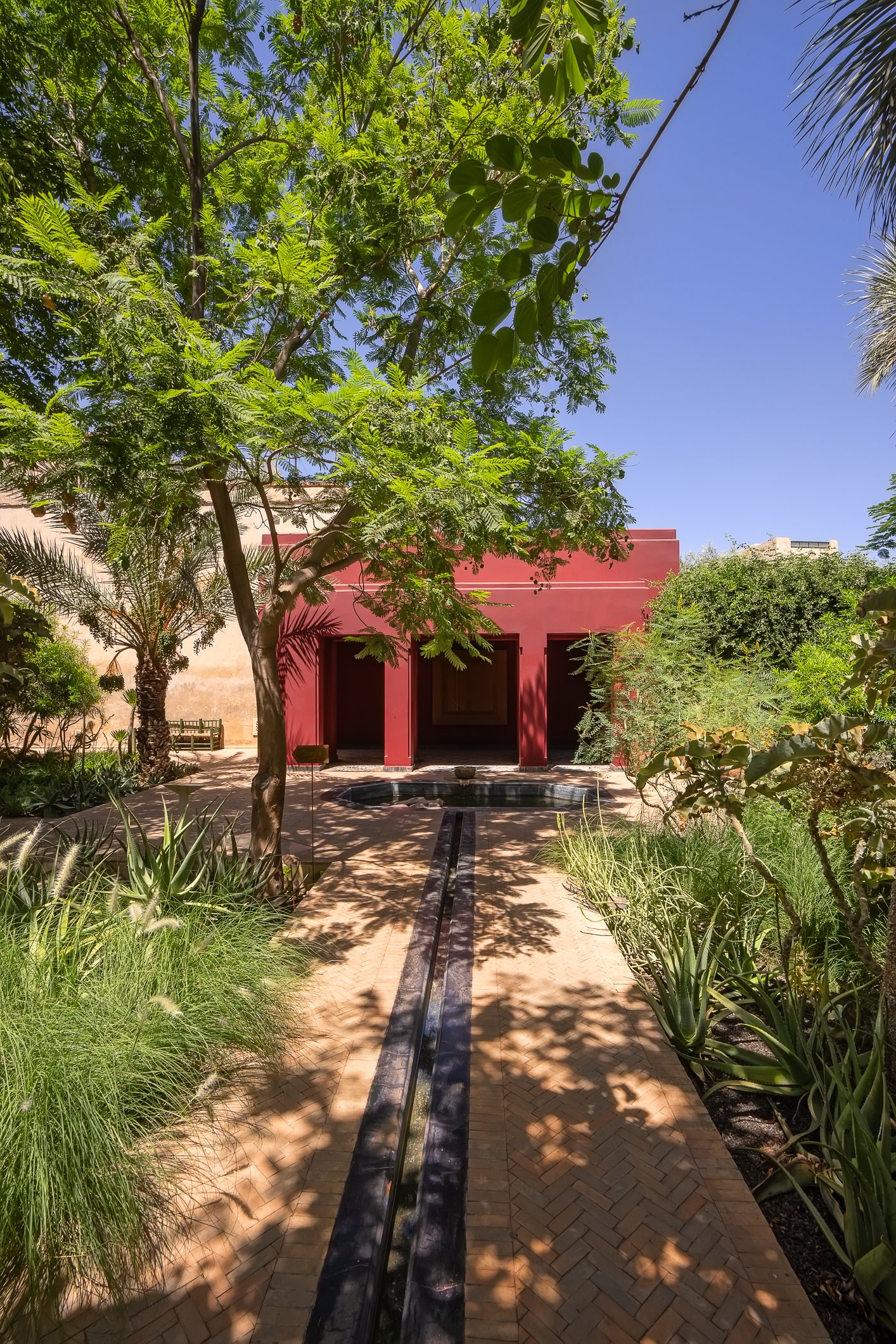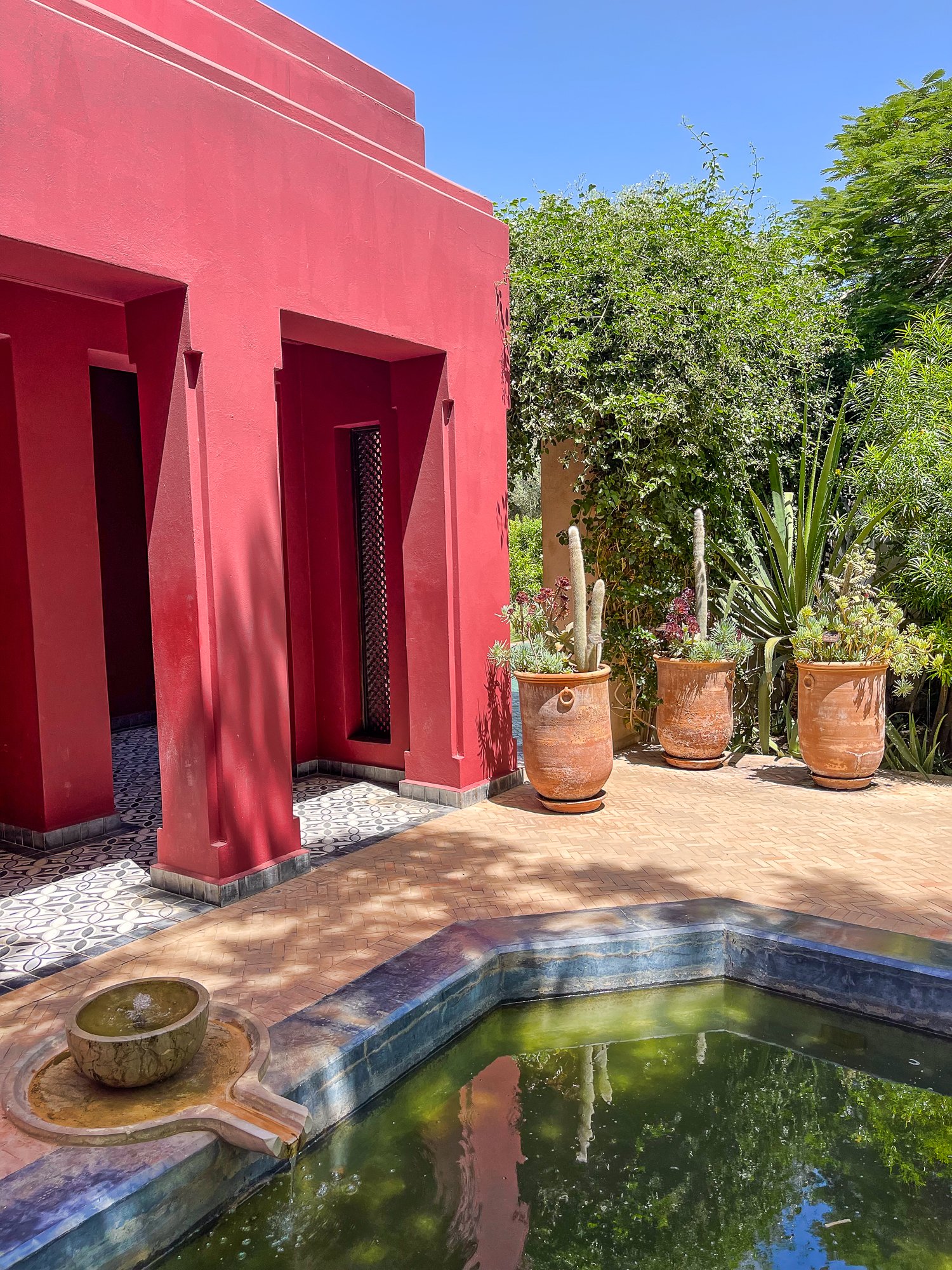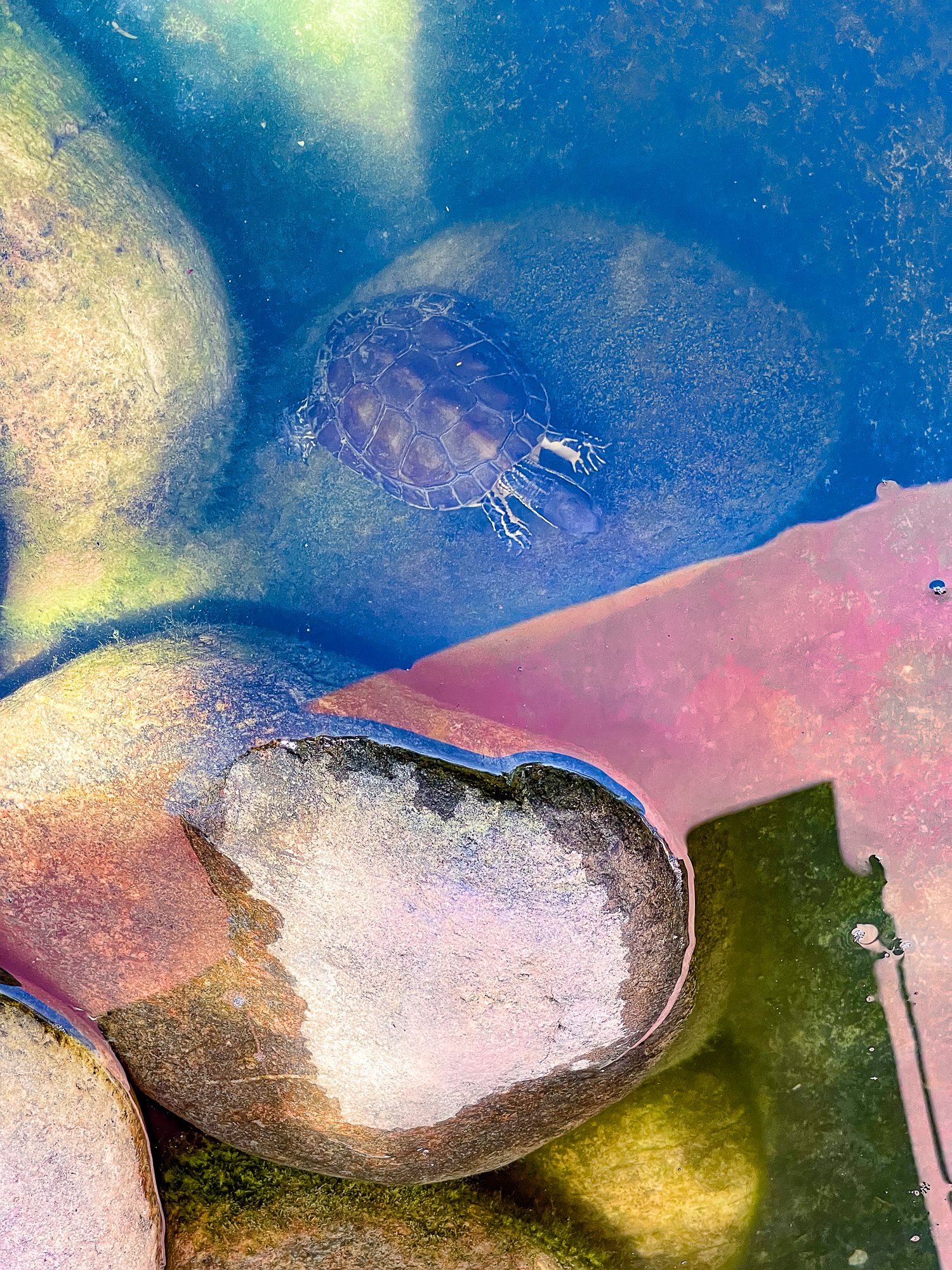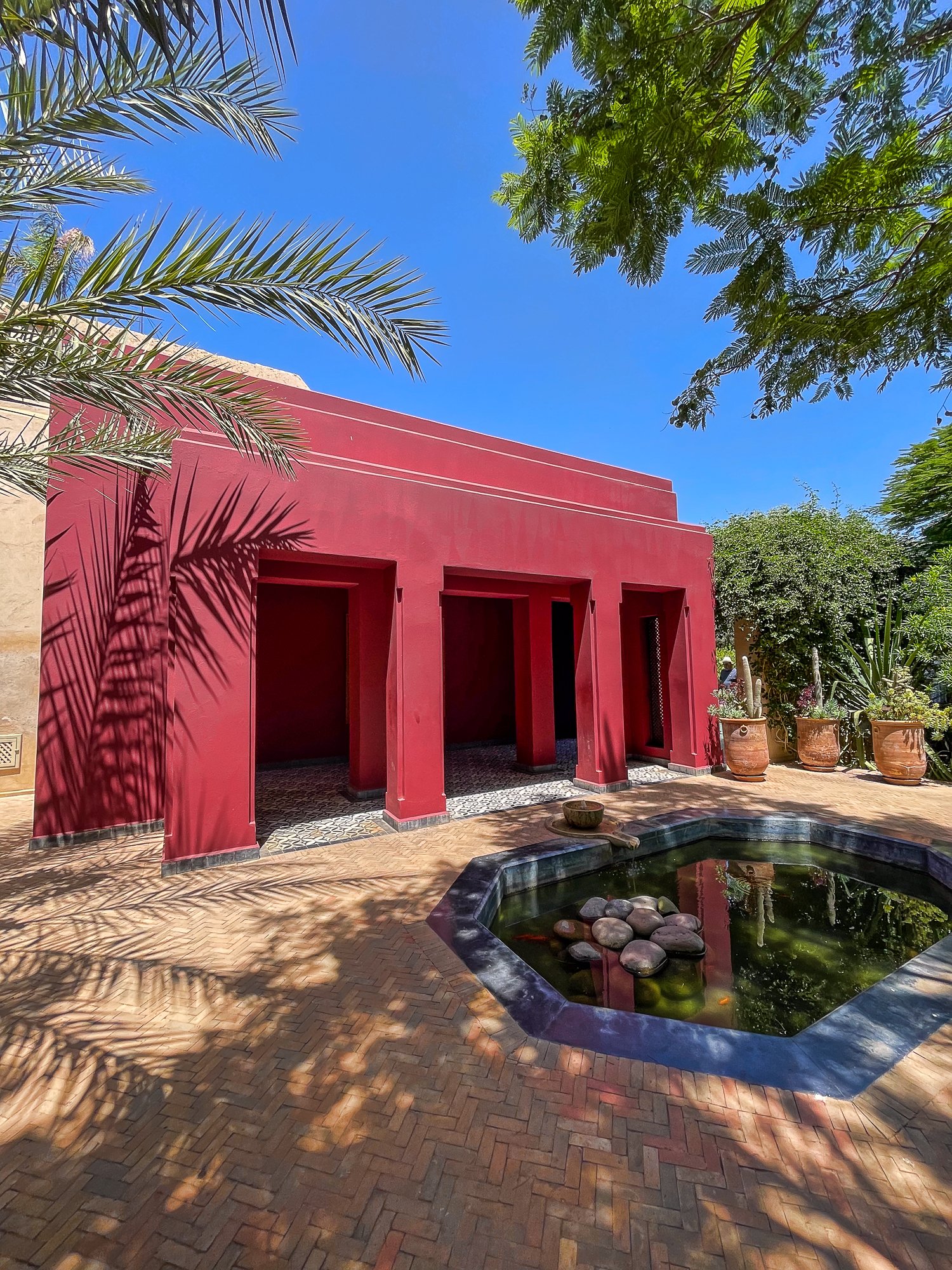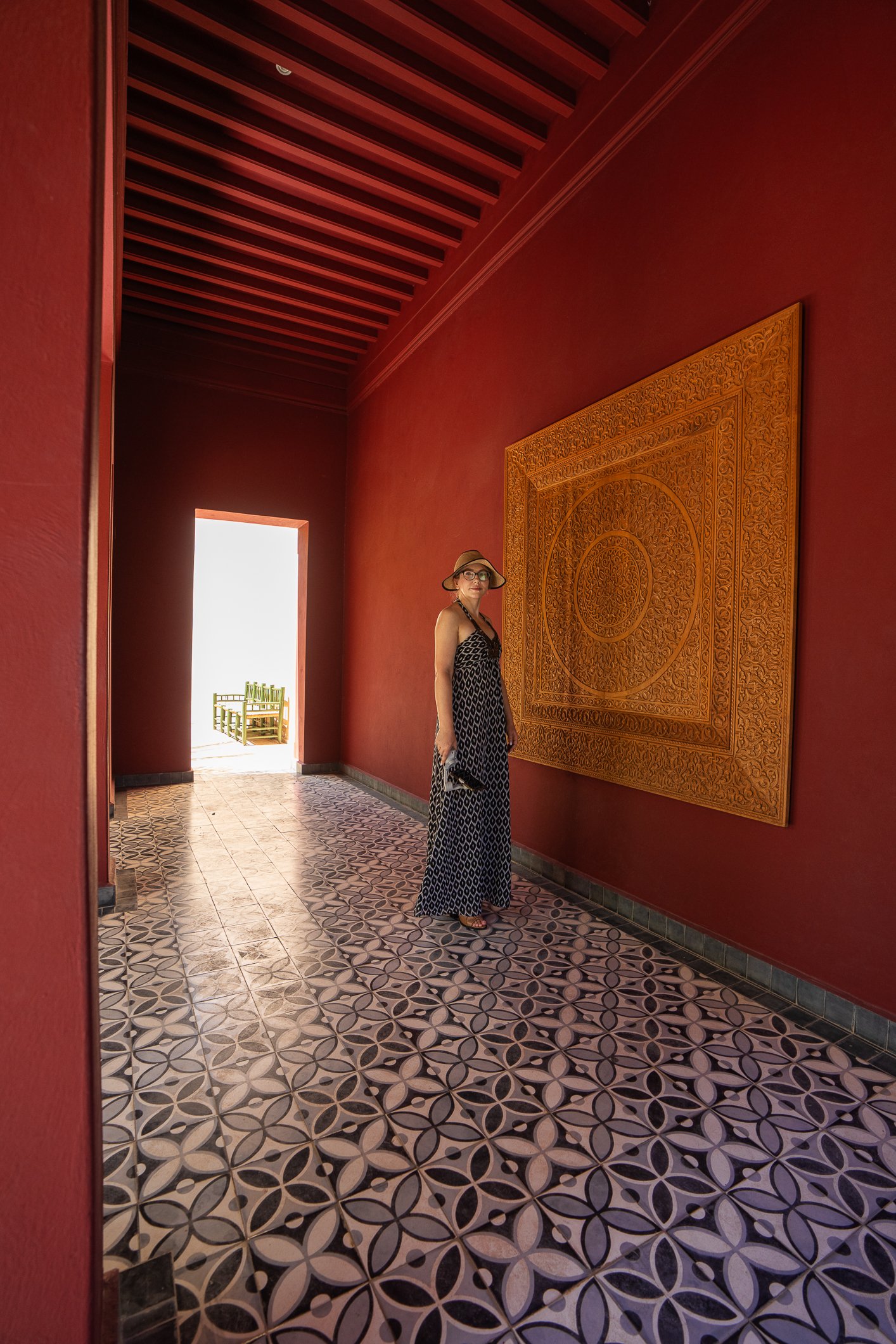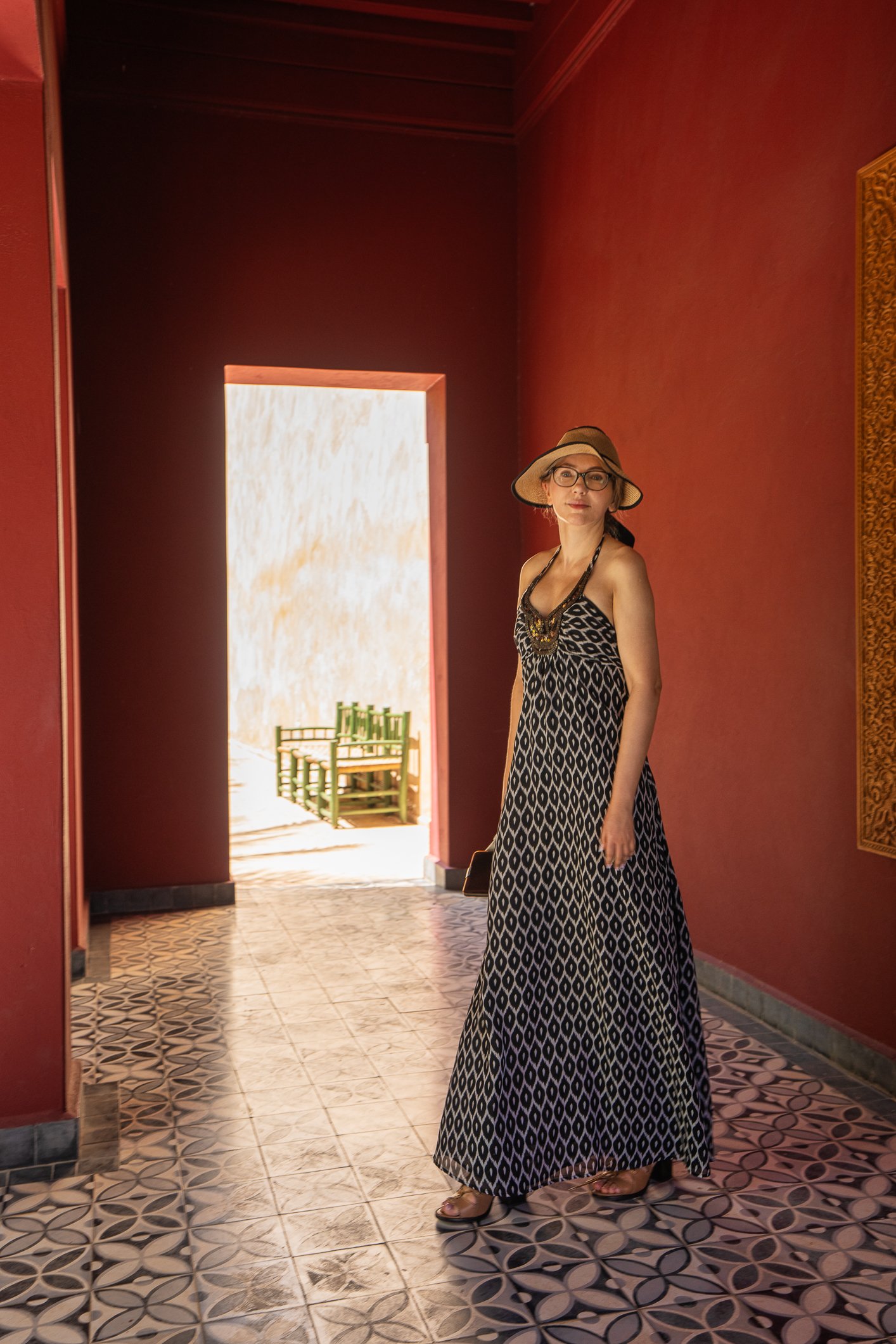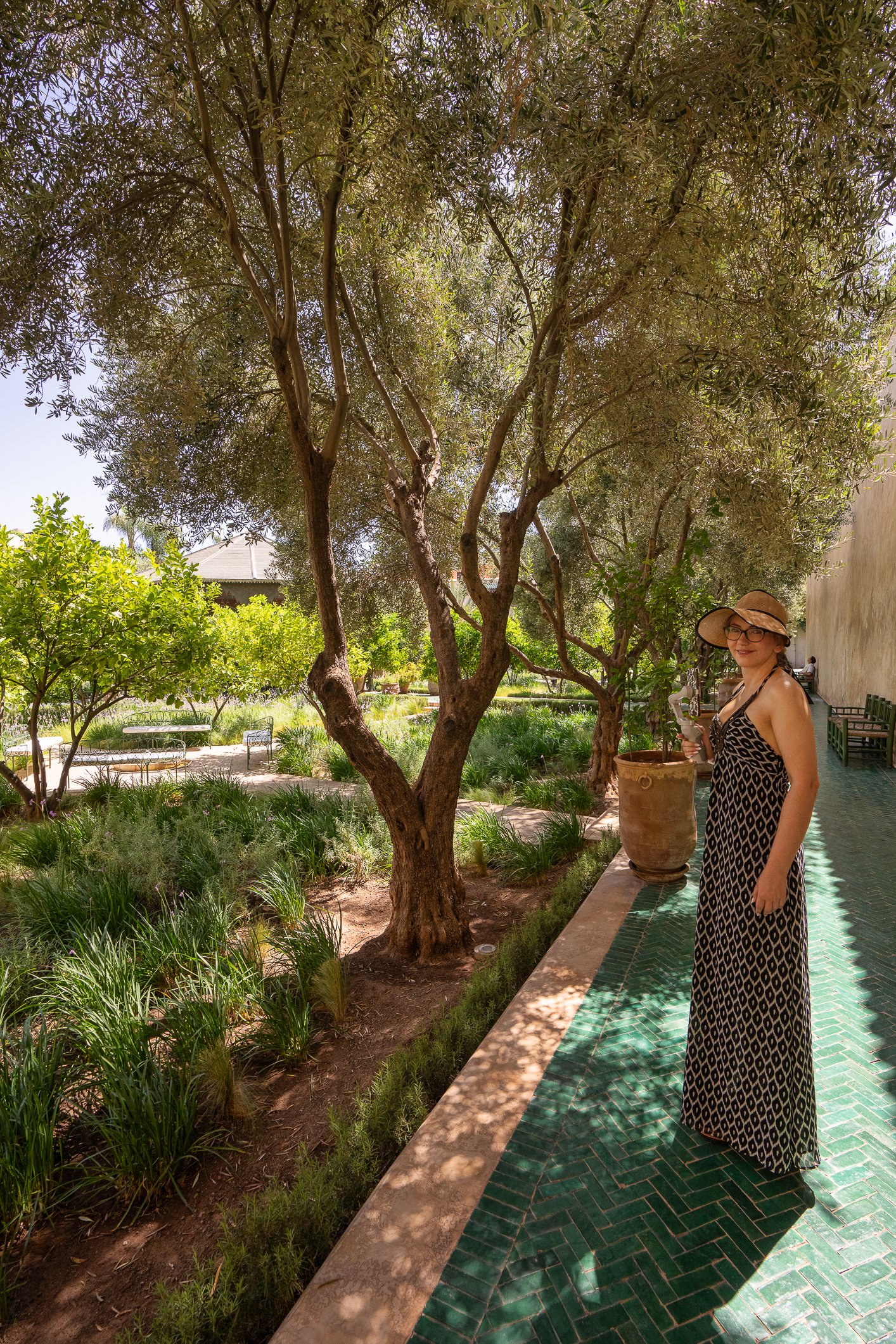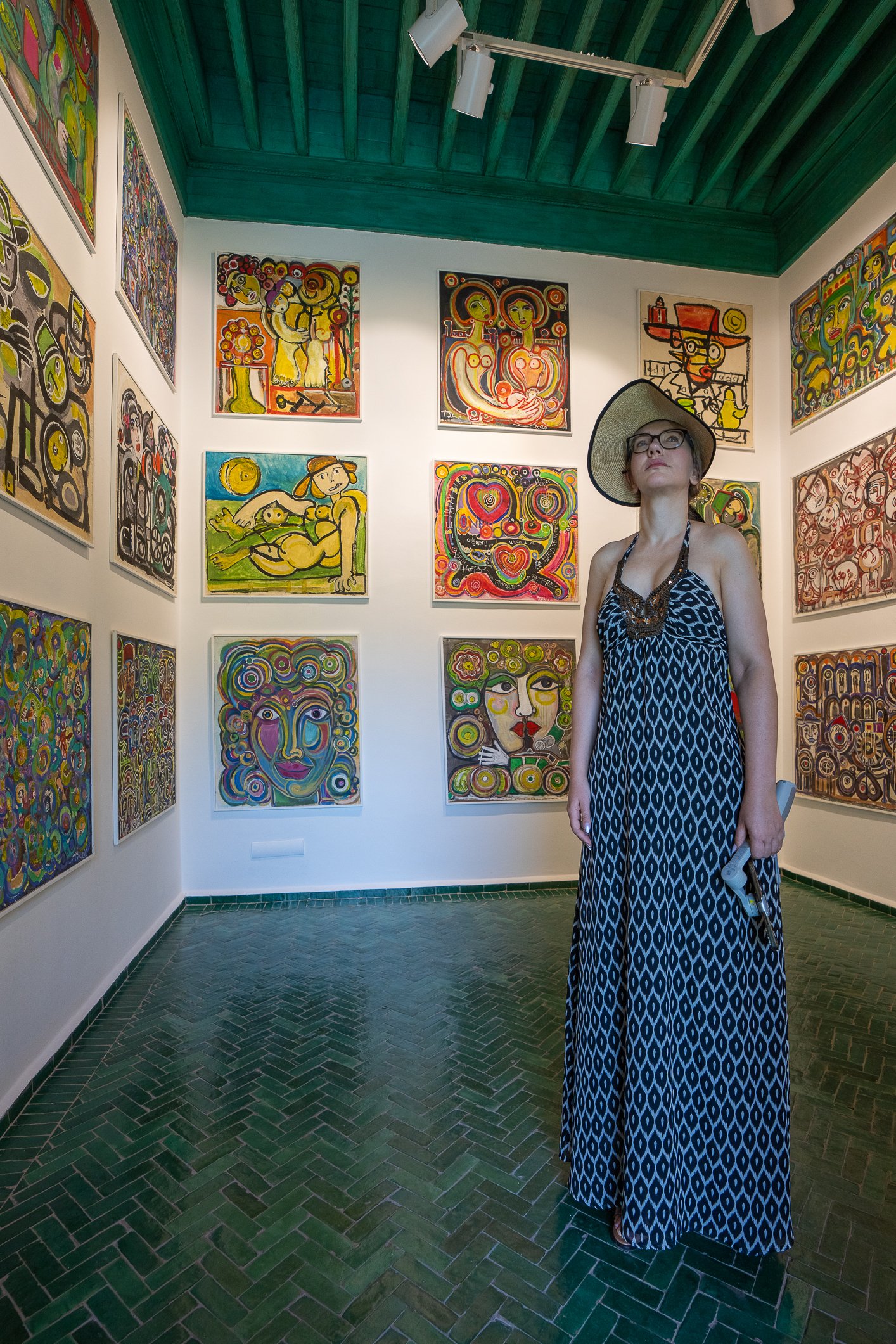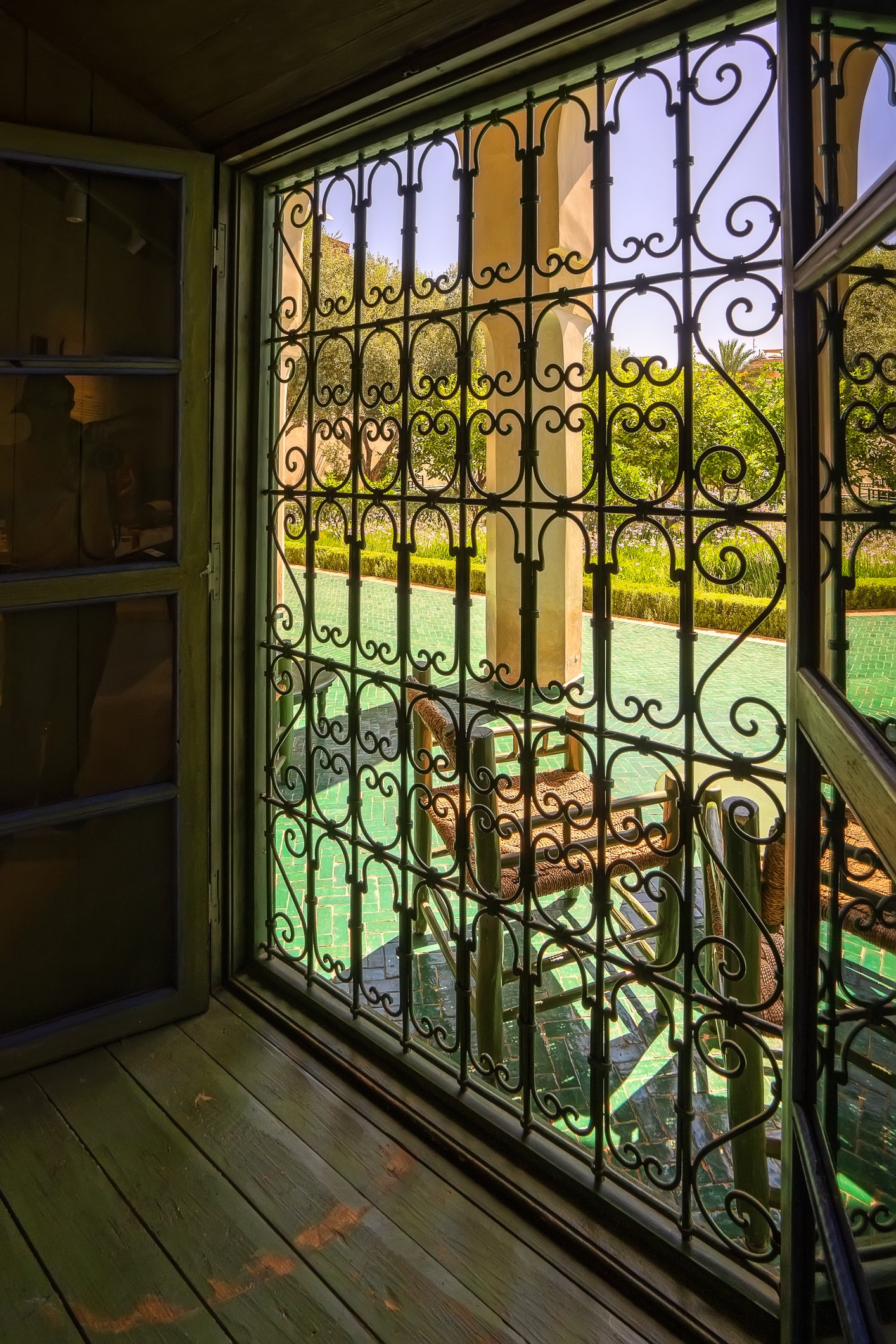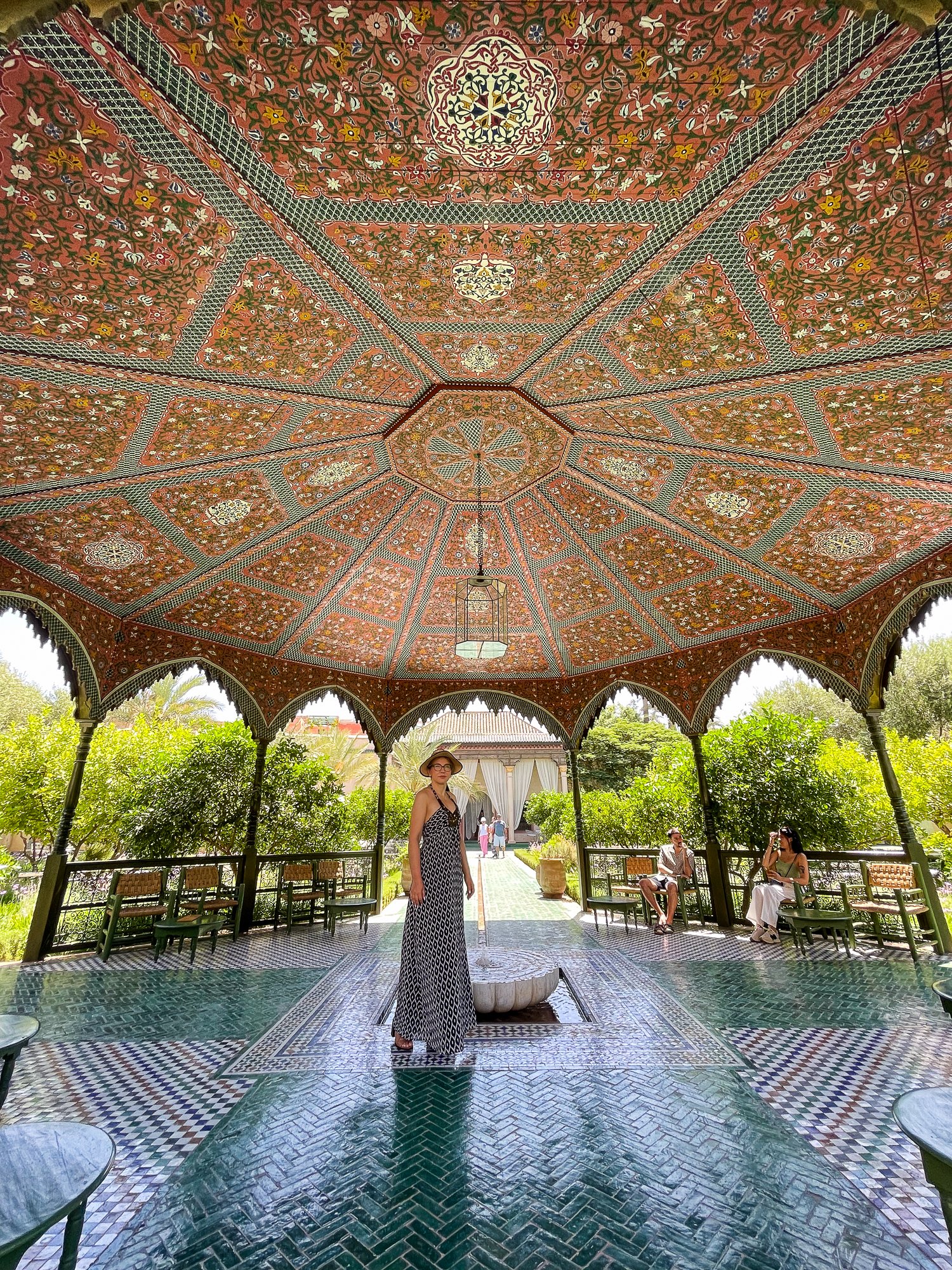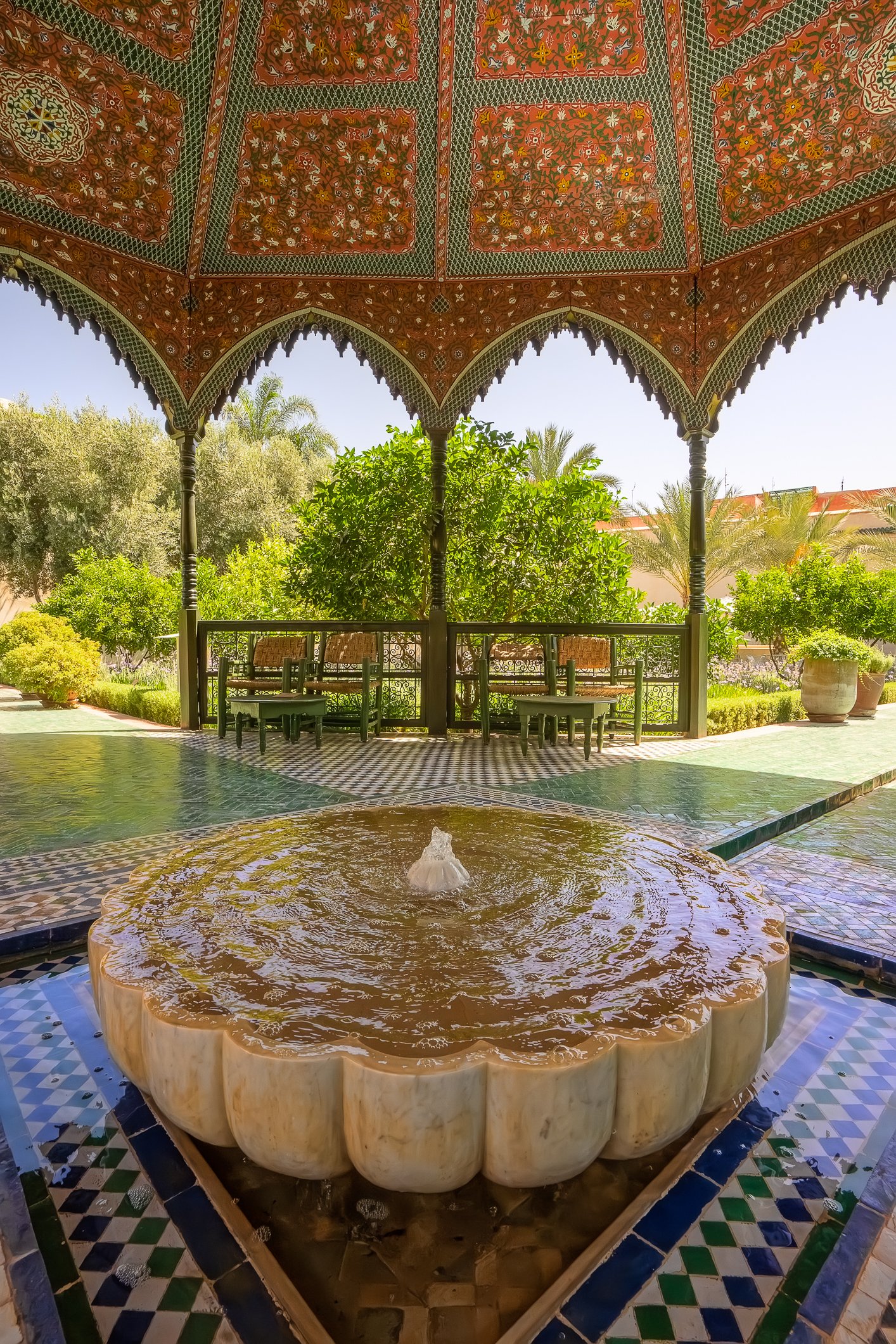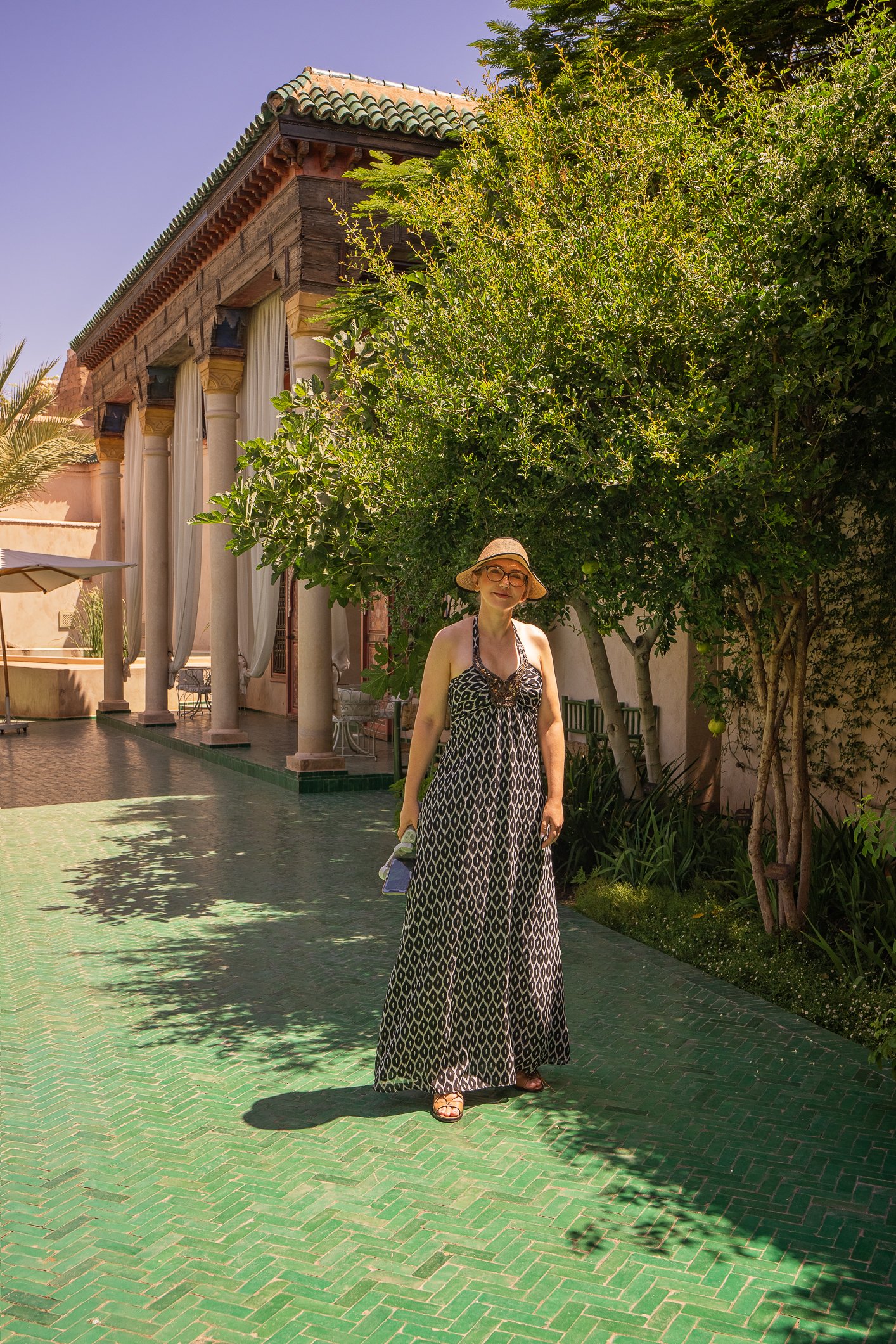The very first place we visit in Marrakesh is Le Jardin Secret. Despite the name, the garden isn’t that much of a secret anymore. On the contrary, it is usually on a “must visit” list of nearly everyone visiting Marrakesh, so it is worth coming early (or very late) to avoid the crowds. And that is why we start the day from here.
Pierwszym miejscem, które odwiedzamy w Marrakeszu, jest Le Jardin Secret. Wbrew swojej nazwie ogrody te nie są żadną tajemnicą. Wręcz przeciwnie, zwykle znajduje się na liście „must visit” prawie każdej osoby odwiedzającej Marrakesz, dlatego warto tu przyjść, jak tylko otwierają (lub bardzo późno), aby uniknąć tłumów. I dlatego też zaczynamy dzień od tego miejsca.
A powerful local chief once owned this place, and it was one of the largest private riads in the medina. But it is not the old buildings that are the attention catcher here; it is the lush greenery of the exotic and Islamic gardens. The riad was watered by a unique underground irrigation system (khettara), which is still operational today. We understood much better how it works after watching a very interesting movie in one of the visitable rooms on the ground floor. The khettara is a ground drainage tunnel that intercepts the water of the groundwater aquifer and then distributes it to the city’s mosques, fountains and hammams. It also reached some of the great houses, including Le Jardin Secret, which had its own water supply - a rare privilege and an additional sign of wealth.
Dzisiejszy Le Jardin Secret był kiedyś jednym z największych prywatnych riadów w medynie. Ale to nie stare budynki najbardziej przyciągają tutaj uwagę, a raczej dwa piękne ogrody: egzotyczny i islamski. Caly teren riadu był nawadniany przez unikalny podziemny system nawadniania (khettara), który funkcjonuje do dziś. Zasady jego działania zrozumieliśmy po obejrzeniu bardzo ciekawego filmu w jednej z sal pawilonu udostępnionych do zwiedzania. Khettara to podziemny tunel odwadniający, który przechwytuje wodę z warstwy wodonośnej wód gruntowych, a następnie rozprowadza ją do miejskich meczetów, fontann i łaźni. Tunele te docierały także do najważniejszych riadów, w tym Le Jardin Secret, który miał dzięki temu własny dostęp do wody– rzadki przywilej i dodatkowy znak zamożności.
To see the watch tower, we head up the narrow stairs to the café at its base, where we are collected by the local guide. The 17-m tall tower is constructed from brick and lime mortar, with large wooden beams enclosed in the walls to consolidate the structure. The room on the top floor has a richly decorated ceiling and an excellently decorated door.
Aby obejrzeć wieżę wartowniczą wchodzimy wąskimi schodami do kawiarni u jej podnóża, gdzie czeka na nas miejscowy przewodnik. 17-metrowa wieża jest zbudowana z cegły i zaprawy wapiennej, a duże drewniane belki są zamknięte w ścianach, aby wzmocnić jej konstrukcję. Pomieszczenie na najwyższym piętrze ma bogato zdobiony sufit i pięknie zdobione drzwi.
From the top of the tower, we can admire the whole medina.
Ze szczytu wieży możemy podziwiać całą medynę.
On the way down, we stop in a cafe for a glass of juice. It is a splendid place to have a refresher whilst surveying the Secret Garden below.
Po drodze na dół zatrzymujemy się w kawiarni na szklankę soku pomarańczowego. Chwila relaksu przy soku, z widokiem na piękne ogrody poniżej, pomaga naładować akumulatory w tym upale.
The exotic garden is filled with plants from all over the world (for example, South Africa, Madagascar, Australia and Latin America), emphasising the experimental aspect of the great gardens of Marrakech. It recalls the Garden of Eden with colourful blooms, bird songs and water trickling from fountains and channels which irrigate the garden.
Egzotyczny ogród wypełniony jest roślinami z całego świata (m.in. z RPA, Madagaskaru, Australii i Ameryki Łacińskiej), podkreślając eksperymentalny aspekt znakomitych ogrodów Marrakeszu. Przypomina on ogród Eden z kolorowymi kwiatami, śpiewem ptaków i wodą sączącą się z fontann i kanałów nawadniających ogród.
The Islamic garden was restored following the likely nineteenth-century layout. This four-part layout of this garden was designed to facilitate the irrigation of the grounds. Rows of citrus trees help create the effect of the bustan, or scented orchard garden.
Islamski ogród został odrestaurowany zgodnie z tym, jak projektowano ogrody w XIX wieku. Czteroczęściowy układ tego ogrodu ułatwia także nawadnianie terenu. Rzędy drzew cytrusowych pomagają stworzyć efekt bustanu, czyli pachnącego sadu.

